#chen shih yuan
Text
youtube
Swim Your Way (2014) [6 min] by Eden Chan (詹凱勛), Chang Shih-Kai (張世楷) and Chen Wei-Yuan (陳威元) | Taiwan
#2D#2D Animation#2014#6 min#Eden Chan#詹凱勛#Chang Shih-Kai#張世楷#Chen Wei-Yuan#陳威元#Taiwan#Animated Short#AnimatedShortOfTheDay#Animation#Strange#Random#Swimming#Creatures#Taipei National University Of The Arts#Youtube
0 notes
Text
List of Gods, most of which are no longer worshipped. via /r/atheism
List of Gods, most of which are no longer worshipped.
Middle-East
A, Adad, Adapa, Adrammelech, Aeon, Agasaya, Aglibol, Ahriman, Ahura Mazda, Ahurani, Ai-ada, Al-Lat, Aja, Aka, Alalu, Al-Lat, Amm, Al-Uzza (El-'Ozza or Han-Uzzai), An, Anahita, Anath (Anat), Anatu, Anbay, Anshar, Anu, Anunitu, An-Zu, Apsu, Aqhat, Ararat, Arinna, Asherali, Ashnan, Ashtoreth, Ashur, Astarte, Atar, Athirat, Athtart, Attis, Aya, Baal (Bel), Baalat (Ba'Alat), Baau, Basamum, Beelsamin, Belit-Seri, Beruth, Borak, Broxa, Caelestis, Cassios, Lebanon, Antilebanon, and Brathy, Chaos, Chemosh, Cotys, Cybele, Daena, Daevas, Dagon, Damkina, Dazimus, Derketo, Dhat-Badan, Dilmun, Dumuzi (Du'uzu), Duttur, Ea, El, Endukugga, Enki, Enlil, Ennugi, Eriskegal, Ereshkigal (Allatu), Eshara, Eshmun, Firanak, Fravashi, Gatamdug, Genea, Genos, Gestinanna, Gula, Hadad, Hannahanna, Hatti, Hea, Hiribi, The Houri, Humban, Innana, Ishkur, Ishtar, Ithm, Jamshid or Jamshyd, Jehovah, Jesus, Kabta, Kadi, Kamrusepas, Ki (Kiki), Kingu, Kolpia, Kothar-u-Khasis, Lahar, Marduk, Mari, Meni, Merodach, Misor, Moloch, Mot, Mushdama, Mylitta, Naamah, Nabu (Nebo), Nairyosangha, Nammu, Namtaru, Nanna, Nebo, Nergal, Nidaba, Ninhursag or Nintu, Ninlil, Ninsar, Nintur, Ninurta, Pa, Qadshu, Rapithwin, Resheph (Mikal or Mekal), Rimmon, Sadarnuna, Shahar, Shalim, Shamish, Shapshu, Sheger, Sin, Siris (Sirah), Taautos, Tammuz, Tanit, Taru, Tasimmet, Telipinu, Tiamat, Tishtrya, Tsehub, Utnapishtim, Utu, Wurusemu, Yam, Yarih (Yarikh), Yima, Zaba, Zababa, Zam, Zanahary (Zanaharibe), Zarpandit, Zarathustra, Zatavu, Zazavavindrano, Ziusudra, Zu (Imdugud), Zurvan
China:
Ba, Caishen, Chang Fei, Chang Hsien, Chang Pan, Ch'ang Tsai, Chao san-Niang, Chao T'eng-k'ang, Chen Kao, Ch'eng Huang, Cheng San-Kung, Cheng Yuan-ho, Chi Po, Chien-Ti, Chih Jih, Chih Nii, Chih Nu, Ch'ih Sung-tzu, Ching Ling Tzu, Ch'ing Lung, Chin-hua Niang-niang, Chio Yuan-Tzu, Chou Wang, Chu Niao, Chu Ying, Chuang-Mu, Chu-jung, Chun T'i, Ch'ung Ling-yu, Chung Liu, Chung-kuei, Chung-li Ch'üan, Di Jun, Fan K'uei, Fei Lien, Feng Pho-Pho, Fengbo, Fu Hsing, Fu-Hsi, Fu-Pao, Gaomei, Guan Di, Hao Ch'iu, Heng-o, Ho Po (Ping-I), Hou Chi, Hou T'u, Hsi Ling-su, Hsi Shih, Hsi Wang Mu, Hsiao Wu, Hsieh T'ien-chun, Hsien Nung, Hsi-shen, Hsu Ch'ang, Hsuan Wen-hua, Huang Ti, Huang T'ing, Huo Pu, Hu-Shen, Jen An, Jizo Bosatsu, Keng Yen-cheng, King Wan, Ko Hsien-Weng, Kuan Ti, Kuan Ti, Kuei-ku Tzu, Kuo Tzu-i, Lai Cho, Lao Lang, Lei Kung, Lei Tsu, Li Lao-chun, Li Tien, Liu Meng, Liu Pei, Lo Shen, Lo Yu, Lo-Tsu Ta-Hsien, Lu Hsing, Lung Yen, Lu-pan, Ma-Ku, Mang Chin-i, Mang Shen, Mao Meng, Men Shen, Miao Hu, Mi-lo Fo, Ming Shang, Nan-chi Hsien-weng, Niu Wang, Nu Wa, Nu-kua, Pa, Pa Cha, Pai Chung, Pai Liu-Fang, Pai Yu, P'an Niang, P'an-Chin-Lien, Pao Yuan-ch'uan, Phan Ku, P'i Chia-Ma, Pien Ho, San Kuan, Sao-ch'ing Niang, Sarudahiko, Shang Chien, Shang Ti, She chi, Shen Hsui-Chih, Shen Nung, Sheng Mu, Shih Liang, Shiu Fang, Shou-lao, Shun I Fu-jen, Sien-Tsang, Ssu-ma Hsiang-ju, Sun Pin, Sun Ssu-miao, Sung-Chiang, Tan Chu, T'ang Ming Huang, Tao Kung, T'ien Fei, Tien Hou, Tien Mu, Ti-tsang, Tsai Shen, Ts'an Nu, Ts'ang Chien, Tsao Chun, Tsao-Wang, T'shai-Shen, Tung Chun, T'ung Chung-chung, T'ung Lai-yu, Tung Lu, T'ung Ming, Tzu-ku Shen, Wa, Wang Ta-hsien, Wang-Mu-Niang-Niang, Weiwobo, Wen-ch'ang, Wu-tai Yuan-shuai, Xi Hou, Xi Wangmu, Xiu Wenyin, Yanwang, Yaoji, Yen-lo, Yen-Lo-Wang, Yi, Yu, Yu Ch'iang, Yu Huang, Yun-T'ung, Yu-Tzu, Zaoshen, Zhang Xi, , Zhinü, , Zhongguei, , Zigu Shen, , Zisun, Ch'ang-O
Slavic:
Aba-khatun, Aigiarm, Ajysyt, Alkonost, Almoshi, Altan-Telgey, Ama, Anapel, As-ava, Ausaitis, Austeja, Ayt'ar, Baba Yaga (Jezi Baba), Belobog (Belun), Boldogasszony, Breksta, Bugady Musun, Chernobog (Crnobog, Czarnobog, Czerneboch, Cernobog), Cinei-new, Colleda (Koliada), Cuvto-ava, Dali, Darzu-mate, Dazhbog, Debena, Devana, Diiwica (Dilwica), Doda (Dodola), Dolya, Dragoni, Dugnai, Dunne Enin, Edji, Elena, Erce, Etugen, Falvara, The Fates, The Fatit, Gabija, Ganiklis, Giltine, Hotogov Mailgan, Hov-ava, Iarila, Isten, Ja-neb'a, Jedza, Joda-mate, Kaldas, Kaltes, Keretkun, Khadau, Khursun (Khors), Kostrubonko, Kovas, Krumine, Kupala, Kupalo, Laima, Leshy, Marina, Marzana, Matergabiae, Mat Syra Zemlya, Medeine, Menu (Menulis), Mir-Susne-Khum, Myesyats, Nastasija, (Russia) Goddess of sleep., Nelaima, Norov, Numi-Tarem, Nyia, Ora, Ot, Patollo, Patrimpas, Pereplut, Perkuno, Perun, Pikuolis, Pilnytis, Piluitus, Potrimpo, Puskaitis, Rod, Rugevit, Rultennin, Rusalki, Sakhadai-Noin, Saule, Semargl, Stribog, Sudjaje, Svantovit (Svantevit, Svitovyd), Svarazic (Svarozic, Svarogich), Tengri, Tñairgin, Triglav, Ulgen (Ulgan, Ülgön), Veles (Volos), Vesna, Xatel-Ekwa, Xoli-Kaltes, Yamm, Yarilo, Yarovit, Ynakhsyt, Zaria, Zeme mate, Zemyna, Ziva (Siva), Zizilia, Zonget, Zorya, Zvoruna, Zvezda Dennitsa, Zywie
Hindu
Aditi, Adityas, Ambika, Ananta (Shesha), Annapurna (Annapatni), Aruna, Ashvins, Balarama, Bhairavi, Brahma, Buddha, Dakini, Devi, Dharma, Dhisana, Durga, Dyaus, Ganesa (Ganesha), Ganga (Ganges), Garuda, Gauri, Gopis, Hanuman, Hari-Hara, Hulka Devi, Jagganath, Jyeshtha, Kama, Karttikeya, Krishna, Krtya, Kubera, Kubjika, Lakshmi or Laksmi, Manasha, Manu, Maya, Meru, Nagas, Nandi, Naraka, Nataraja, Nirriti, Parjanya, Parvati, Paurnamasi, Prithivi, Purusha, Radha, Rati, Ratri, Rudra, Sanjna, Sati, Shashti, Shatala, Sitala (Satala), Skanda, Sunrta, Surya, Svasti-devi, Tvashtar, Uma, Urjani, Vach, Varuna, Vayu, Vishnu (Avatars of Vishnu: Matsya; Kurma; Varaha; Narasinha; Vamana; Parasurama; Rama; Krishna; Buddha; Kalki), Vishvakarman, Yama, Sraddha
Japan: Aji-Suki-Taka-Hi-Kone, Ama no Uzume, Ama-terasu, Amatsu Mikaboshi, Benten (Benzai-Ten), Bishamon, Chimata-No-Kami, Chup-Kamui, Daikoku, Ebisu, Emma-O, Fudo, Fuji, Fukurokuju, Gekka-O, Hachiman, Hettsui-No-Kami, Ho-Masubi, Hotei, Inari, Izanagi and Izanami, Jizo Bosatsu, Jurojin, Kagutsuchi, Kamado-No-Kami, Kami, Kawa-No-Kami, Kaya-Nu-Hima, Kishijoten, Kishi-Mojin, Kunitokotatchi, Marici, Monju-Bosatsu, Nai-No-Kami, No-Il Ja-Dae, O-Kuni-Nushi, Omoigane, Raiden, Shine-Tsu-Hiko, Shoten, Susa-no-wo, Tajika-no-mikoto, Tsuki-yomi, Uka no Mitanna, Uke-mochi, Uso-dori, Uzume, Wakahirume, Yainato-Hnneno-Mikoi, Yama-No-Kami, Yama-no-Karni, Yaya-Zakurai, Yuki-Onne
India
Agni, Ammavaru, Asuras, Banka-Mundi, Brihaspati, Budhi Pallien, Candi, Challalamma, Chinnintamma, Devas, Dyaush, Gauri-Sankar, Grhadevi, Gujeswari, Indra, Kali, Lohasur Devi, Mayavel, Mitra, Prajapati, Puchan, Purandhi, Rakshas, Rudrani, Rumina, Samundra, Sarasvati, Savitar, Siva (Shiva), Soma, Sura, Surabhi, Tulsi, Ushas, Vata, Visvamitra, Vivasvat, Vritra, Waghai Devi, Yaparamma, Yayu, Zumiang Nui, Diti
Other Asian: Dewi Shri, Po Yan Dari, Shuzanghu, Antaboga, Yakushi Nyorai, Mulhalmoni, Tankun, Yondung Halmoni, Aryong Jong, Quan Yin , Tengri, Uminai-gami, Kamado-No-Kami, Kunitokotatchi, Giri Devi, Dewi Nawang Sasih, Brag-srin-mo, Samanta-Bhadra, Sangs-rgyas-mkhá, Sengdroma, Sgeg-mo-ma, Tho-og, Ui Tango, Yum-chen-mo, Zas-ster-ma-dmar-mo, Chandra, Dyaus, Ratri, Rodasi, Vayu, Au-Co
African Gods, Demigods and First Men:
Abassi , Abuk , Adu Ogyinae , Agé , Agwe , Aida Wedo , Ajalamo, Aje, Ajok, Akonadi, Akongo, Akuj, Amma, Anansi, Asase Yaa, Ashiakle, Atai , Ayaba, Aziri, Baatsi, Bayanni, Bele Alua, Bomo rambi, Bosumabla, Buk, Buku, Bumba, Bunzi, Buruku, Cagn, Candit, Cghene, Coti, Damballah-Wedo, Dan, Deng, Domfe, Dongo, Edinkira, Efé, Egungun-oya, Eka Abassi, Elephant Girl Mbombe, Emayian, Enekpe, En-Kai, Eseasar, Eshu, Esu, Fa, Faran, Faro, Fatouma, Fidi Mukullu, Fon, Gleti, Gonzuole, Gû, Gua, Gulu, Gunab, Hammadi, Hêbiesso, Iku, Ilankaka, Imana, Iruwa, Isaywa, Juok, Kazooba, Khakaba, Khonvum, Kibuka, Kintu, Lebé, Leza, Libanza, Lituolone, Loko, Marwe, Massim Biambe, Mawu-Lisa (Leza), Mboze, Mebeli, Minepa, Moombi, Mukameiguru, Mukasa, Muluku, Mulungu, Mwambu, Nai, Nambi, Nana Buluku, Nanan-Bouclou, Nenaunir, Ng Ai, Nyaliep, Nyambé, Nyankopon, Nyasaye, Nzame, Oboto, Obumo, Odudua-Orishala, Ogun, Olokun, Olorun, Orisha Nla, Orunmila, Osanyin, Oshe, Osun, Oya, Phebele, Pokot-Suk, Ralubumbha, Rugaba, Ruhanga, Ryangombe, Sagbata, Shagpona, Shango, Sopona, Tano, Thixo, Tilo, Tokoloshi, Tsui, Tsui'goab, Umvelinqangi, Unkulunkulu, Utixo, Wak, Wamara, Wantu Su, Wele, Were, Woto, Xevioso, Yangombi, Yemonja, Ymoa, Ymoja, Yoruba, Zambi, Zanahary , Zinkibaru
Australian Gods, Goddesses and Places in the Dreamtime:
Alinga, Anjea, Apunga, Arahuta, Ariki, Arohirohi, Bamapana, Banaitja, Bara, Barraiya, Biame, Bila, Boaliri, Bobbi-bobbi, Bunbulama, Bunjil, Cunnembeille, Daramulum, Dilga, Djanggawul Sisters, Eingana, Erathipa, Gidja , Gnowee, Haumia, Hine Titama, Ingridi, Julana, Julunggul, Junkgowa, Karora, Kunapipi-Kalwadi-Kadjara, Lia, Madalait, Makara, Nabudi, Palpinkalare, Papa, Rangi, Rongo, Tane, Tangaroa, Tawhiri-ma-tea, Tomituka, Tu, Ungamilia, Walo, Waramurungundi, Wati Kutjarra, Wawalag Sisters, Wuluwaid, Wuragag, Wuriupranili, Wurrunna, Yhi
Buddhism, Gods and Relatives of God:
Aizen-Myoo, Ajima,Dai-itoku-Myoo, Fudo-Myoo, Gozanze-Myoo, Gundari-Myoo, Hariti, Kongo-Myoo, Kujaku-Myoo, Ni-O
Carribean: Gods, Monsters and Vodun Spirits
Agaman Nibo , Agwe, Agweta, Ah Uaynih, Aida Wedo , Atabei , Ayida , Ayizan, Azacca, Baron Samedi, Ulrich, Ellegua, Ogun, Ochosi, Chango, Itaba, Amelia, Christalline, Clairmé, Clairmeziné, Coatrischie, Damballah , Emanjah, Erzuli, Erzulie, Ezili, Ghede, Guabancex, Guabonito, Guamaonocon, Imanje, Karous, Laloue-diji, Legba, Loa, Loco, Maitresse Amelia , Mapiangueh, Marie-aimée, Marinette, Mombu, Marassa, Nana Buruku, Oba, Obtala, Ochu, Ochumare, Oddudua, Ogoun, Olokum, Olosa, Oshun, Oya, Philomena, Sirêne, The Diablesse, Itaba, Tsilah, Ursule, Vierge, Yemaya , Zaka
Celtic: Gods, Goddesses, Divine Kings and Pagan Saints
Abarta, Abna, Abnoba, Aine, Airetech,Akonadi, Amaethon, Ameathon, An Cailleach, Andraste, Antenociticus, Aranrhod, Arawn, Arianrod, Artio, Badb,Balor, Banbha, Becuma, Belatucadros, Belatu-Cadros, Belenus, Beli,Belimawr, Belinus, Bendigeidfran, Bile, Blathnat, Blodeuwedd, Boann, Bodus,Bormanus, Borvo, Bran, Branwen, Bres, Brigid, Brigit, Caridwen, Carpantus,Cathbadh, Cecht, Cernach, Cernunnos, Cliodna, Cocidius, Conchobar, Condatis, Cormac,Coronus,Cosunea, Coventina, Crarus,Creidhne, Creirwy, Cu Chulainn, Cu roi, Cuda, Cuill,Cyhiraeth,Dagda, Damona, Dana, Danu, D'Aulnoy,Dea Artio, Deirdre , Dewi, Dian, Diancecht, Dis Pater, Donn, Dwyn, Dylan, Dywel,Efnisien, Elatha, Epona, Eriu, Esos, Esus, Eurymedon,Fedelma, Fergus, Finn, Fodla, Goewyn, Gog, Goibhniu, Govannon , Grainne, Greine,Gwydion, Gwynn ap Nudd, Herne, Hu'Gadarn, Keltoi,Keridwen, Kernunnos,Ler, Lir, Lleu Llaw Gyffes, Lludd, Llyr, Llywy, Luchta, Lug, Lugh,Lugus, Mabinogion,Mabon, Mac Da Tho, Macha, Magog, Manannan, Manawydan, Maponos, Math, Math Ap Mathonwy, Medb, Moccos,Modron, Mogons, Morrig, Morrigan, Nabon,Nantosuelta, Naoise, Nechtan, Nedoledius,Nehalennia, Nemhain, Net,Nisien, Nodens, Noisi, Nuada, Nwywre,Oengus, Ogma, Ogmios, Oisin, Pach,Partholon, Penard Dun, Pryderi, Pwyll, Rhiannon, Rosmerta, Samhain, Segidaiacus, Sirona, Sucellus, Sulis, Taliesin, Taranis, Teutates, The Horned One,The Hunt, Treveni,Tyne, Urien, Ursula of the Silver Host, Vellaunus, Vitiris, White Lady
Egyptian: Gods, Gods Incarnate and Personified Divine Forces:
Amaunet, Amen, Amon, Amun, Anat, Anqet, Antaios, Anubis, Anuket, Apep, Apis, Astarte, Aten, Aton, Atum, Bastet, Bat, Buto, Duamutef, Duamutef, Hapi, Har-pa-khered, Hathor, Hauhet, Heket, Horus, Huh, Imset, Isis, Kauket, Kebechsenef, Khensu, Khepri, Khnemu, Khnum, Khonsu, Kuk, Maahes, Ma'at, Mehen, Meretseger, Min, Mnewer, Mut, Naunet, Nefertem, Neith, Nekhbet, Nephthys, Nun, Nut, Osiris, Ptah, Ra , Re, Renenet, Sakhmet, Satet, Seb, Seker, Sekhmet, Serapis, Serket, Set, Seth, Shai, Shu, Shu, Sia, Sobek, Sokar, Tefnut, Tem, Thoth
Hellenes (Greek) Tradition (Gods, Demigods, Divine Bastards)
Acidalia, Aello, Aesculapius, Agathe, Agdistis, Ageleia, Aglauros, Agne, Agoraia, Agreia, Agreie, Agreiphontes, Agreus, Agrios, Agrotera, Aguieus, Aidoneus, Aigiokhos, Aigletes, Aigobolos, Ainia,Ainippe, Aithuia , Akesios, Akraia, Aktaios, Alalkomene, Alasiotas, Alcibie, Alcinoe, Alcippe, Alcis,Alea, Alexikakos, Aligena, Aliterios, Alkaia, Amaltheia, Ambidexter, Ambologera, Amynomene,Anaduomene, Anaea, Anax, Anaxilea, Androdameia,Andromache, Andromeda, Androphonos, Anosia, Antandre,Antania, Antheus, Anthroporraistes, Antianara, Antianeira, Antibrote, Antimache, Antimachos, Antiope,Antiopeia, Aoide, Apatouria, Aphneius, Aphrodite, Apollo, Apotropaios, Areia, Areia, Areion, Areopagite, Ares, Areto, Areximacha,Argus, Aridnus,Aristaios, Aristomache, Arkhegetes, Arktos, Arretos, Arsenothelys, Artemis, Asclepius, Asklepios, Aspheleios, Asteria, Astraeos , Athene, Auxites, Avaris, Axios, Axios Tauros,Bakcheios, Bakchos, Basileus, Basilis, Bassareus, Bauros, Boophis, Boreas , Botryophoros, Boukeros, Boulaia, Boulaios, Bremusa,Bromios, Byblis,Bythios, Caliope, Cedreatis, Celaneo, centaur, Cerberus, Charidotes, Charybdis, Chimera, Chloe, Chloris , Choreutes, Choroplekes, Chthonios, Clete, Clio, clotho,Clyemne, cockatrice, Crataeis, Custos, Cybebe, Cybele, Cyclops, Daphnaia, Daphnephoros, Deianeira, Deinomache, Delia, Delios, Delphic, Delphinios, Demeter, Dendrites, Derimacheia,Derinoe, Despoina, Dikerotes, Dimeter, Dimorphos, Dindymene, Dioktoros, Dionysos, Discordia, Dissotokos, Dithyrambos, Doris, Dryope,Echephyle,Echidna, Eiraphiotes, Ekstatophoros, Eleemon, Eleuthereus, Eleutherios, Ennosigaios, Enodia, Enodios, Enoplios, Enorches, Enualios, Eos , Epaine, Epidotes, Epikourios, Epipontia, Epitragidia, Epitumbidia, Erato, Ergane, Eribromios, Erigdoupos, Erinus, Eriobea, Eriounios, Eriphos, Eris, Eros,Euanthes, Euaster, Eubouleus, Euboulos, Euios, Eukhaitos, Eukleia, Eukles, Eumache, Eunemos, Euplois, Euros , Eurybe,Euryleia, Euterpe, Fates,Fortuna, Gaia, Gaieokhos, Galea, Gamelia, Gamelios, Gamostolos, Genetor, Genetullis, Geryon, Gethosynos, giants, Gigantophonos, Glaukopis, Gorgons, Gorgopis, Graiae, griffin, Gynaikothoinas, Gynnis, Hagisilaos, Hagnos, Haides, Harmothoe, harpy, Hegemone, Hegemonios, Hekate, Hekatos, Helios, Hellotis, Hephaistia, Hephaistos, Hera, Heraios, Herakles, Herkeios, Hermes, Heros Theos, Hersos, Hestia, Heteira, Hiksios, Hipp, Hippia, Hippios, Hippoi Athanatoi, Hippolyte, Hippolyte II,Hippomache,Hippothoe, Horkos, Hugieia, Hupatos, Hydra, Hypate, Hyperborean, Hypsipyle, Hypsistos, Iakchos, Iatros, Idaia, Invictus, Iphito,Ismenios, Ismenus,Itonia, Kabeiria, Kabeiroi, Kakia, Kallinikos, Kallipugos, Kallisti, Kappotas, Karneios, Karpophoros, Karytis, Kataibates, Katakhthonios, Kathatsios, Keladeine, Keraunos, Kerykes, Khalinitis, Khalkioikos, Kharmon, Khera, Khloe, Khlori,Khloris,Khruse, Khthonia, Khthonios, Kidaria, Kissobryos, Kissokomes, Kissos, Kitharodos, Kleidouchos, Kleoptoleme, Klymenos, Kore, Koruthalia, Korymbophoros, Kourotrophos, Kranaia, Kranaios, Krataiis, Kreousa, Kretogenes, Kriophoros, Kronides, Kronos,Kryphios, Ktesios, Kubebe, Kupris, Kuprogenes, Kurotrophos, Kuthereia, Kybele, Kydoime,Kynthia, Kyrios, Ladon, Lakinia, Lamia, Lampter, Laodoke, Laphria, Lenaios, Leukatas, Leukatas, Leukolenos, Leukophruene, Liknites, Limenia, Limnaios, Limnatis, Logios, Lokhia, Lousia, Loxias, Lukaios, Lukeios, Lyaios, Lygodesma, Lykopis, Lyseus, Lysippe, Maimaktes, Mainomenos, Majestas, Makar, Maleatas, Manikos, Mantis, Marpe, Marpesia, Medusa, Megale, Meilikhios, Melaina, Melainis, Melanaigis, Melanippe,Melete, Melousa, Melpomene, Melqart, Meses, Mimnousa, Minotaur, Mneme, Molpadia,Monogenes, Morpho, Morychos, Musagates, Musagetes, Nebrodes, Nephelegereta, Nereus,Nete, Nike, Nikephoros, Nomios, Nomius, Notos , Nyktelios, Nyktipolos, Nympheuomene, Nysios, Oiketor, Okyale, Okypous, Olumpios, Omadios, Ombrios, Orithia,Orius,Ortheia, Orthos, Ourania, Ourios, Paelemona, Paian, Pais, Palaios, Pallas, Pan Megas, Panakhais, Pandemos, Pandrosos, Pantariste, Parthenos, PAsianax, Pasiphaessa, Pater, Pater, Patroo s, Pegasus, Pelagia, Penthesilea, Perikionios, Persephone, Petraios, Phanes, Phanter, Phatria, Philios, Philippis, Philomeides, Phoebe, Phoebus, Phoenix, Phoibos, Phosphoros, Phratrios, Phutalmios, Physis, Pisto, Plouton, Polemusa,Poliakhos, Polias, Polieus, Polumetis, Polydektes, Polygethes, Polymnia, Polymorphos, Polyonomos, Porne, Poseidon, Potnia Khaos, Potnia Pheron, Promakhos, Pronoia, Propulaios, Propylaia, Proserpine, Prothoe, Protogonos, Prytaneia, Psychopompos, Puronia, Puthios, Pyrgomache, Python, Rhea, Sabazios, Salpinx, satyr, Saxanus, Scyleia,Scylla, sirens, Skeptouchos, Smintheus, Sophia, Sosipolis, Soter, Soteria, Sphinx, Staphylos, Sthenias, Sthenios, Strife, Summakhia, Sykites, Syzygia, Tallaios, Taureos, Taurokeros, Taurophagos, Tauropolos, Tauropon, Tecmessa, Teisipyte, Teleios, Telepyleia,Teletarches, Terpsichore, Thalestris, Thalia, The Dioskouroi, Theos, Theritas, Thermodosa, Thraso, Thyonidas, Thyrsophoros, Tmolene, Toxaris, Toxis, Toxophile,Trevia, Tricephalus, Trieterikos, Trigonos, Trismegestos, Tritogeneia, Tropaios, Trophonius,Tumborukhos, Tyche, Typhon, Urania, Valasca, Xanthippe, Xenios, Zagreus, Zathos, Zephryos , Zeus, Zeus Katakhthonios, Zoophoros Topana
Native American: Gods, Heroes, and Anthropomorphized Facets of Nature
Aakuluujjusi, Ab Kin zoc, Abaangui , Ababinili , Ac Yanto, Acan, Acat, Achiyalatopa , Acna, Acolmiztli, Acolnahuacatl, Acuecucyoticihuati, Adamisil Wedo, Adaox , Adekagagwaa , Adlet , Adlivun, Agloolik , Aguara , Ah Bolom Tzacab, Ah Cancum, Ah Chun Caan, Ah Chuy Kak, Ah Ciliz, Ah Cun Can, Ah Cuxtal, Ah hulneb, Ah Kin, Ah Kumix Uinicob, Ah Mun, Ah Muzencab, Ah Patnar Uinicob, Ah Peku, Ah Puch, Ah Tabai, Ah UincirDz'acab, Ah Uuc Ticab, Ah Wink-ir Masa, Ahau Chamahez, Ahau-Kin, Ahmakiq, Ahnt Alis Pok', Ahnt Kai', Aholi , Ahsonnutli , Ahuic, Ahulane, Aiauh, Aipaloovik , Ajbit, Ajilee , Ajtzak, Akbaalia , Akba-atatdia , Akhlut , Akhushtal, Akna , Akycha, Alaghom Naom Tzentel, Albino Spirit animals , Alektca , Alignak, Allanque , Allowat Sakima , Alom, Alowatsakima , Amaguq , Amala , Amimitl, Amitolane, Amotken , Andaokut , Andiciopec , Anerneq , Anetlacualtiliztli, Angalkuq , Angpetu Wi, Anguta, Angwusnasomtaka , Ani Hyuntikwalaski , Animal spirits , Aningan, Aniwye , Anog Ite , Anpao, Apanuugak , Apicilnic , Apikunni , Apotamkin , Apoyan Tachi , Apozanolotl, Apu Punchau, Aqalax , Arendiwane , Arnakua'gsak , Asdiwal , Asgaya Gigagei, Asiaq , Asin , Asintmah, Atacokai , Atahensic, Aticpac Calqui Cihuatl, Atira, Atisokan , Atius Tirawa , Atl, Atlacamani, Atlacoya, Atlatonin, Atlaua, Atshen , Auilix, Aulanerk , Aumanil , Aunggaak , Aunt Nancy , Awaeh Yegendji , Awakkule , Awitelin Tsta , Awonawilona, Ayauhteotl, Azeban, Baaxpee , Bacabs, Backlum Chaam, Bagucks , Bakbakwalanooksiwae , Balam, Baldhead , Basamacha , Basket Woman , Bead Spitter , Bear , Bear Medicine Woman , Bear Woman , Beaver , Beaver Doctor , Big Heads, Big Man Eater , Big Tail , Big Twisted Flute , Bikeh hozho, Bitol, Black Hactcin , Black Tamanous , Blind Boy , Blind Man , Blood Clot Boy , Bloody Hand , Blue-Jay , Bmola , Bolontiku, Breathmaker, Buffalo , Buluc Chabtan, Burnt Belly , Burnt Face , Butterfly , Cabaguil, Cacoch, Cajolom, Cakulha, Camaxtli, Camozotz, Cannibal Grandmother , Cannibal Woman , Canotila , Capa , Caprakan, Ca-the-ña, Cauac, Centeotl, Centzonuitznaua, Cetan , Chac Uayab Xoc, Chac, Chahnameed , Chakwaina Okya, Chalchihuitlicue, Chalchiuhtlatonal, Chalchiutotolin, Chalmecacihuilt, Chalmecatl, Chamer, Changing Bear Woman , Changing Woman , Chantico, Chaob, Charred Body , Chepi , Chibiabos ,Chibirias, Chiccan, Chicomecoatl, Chicomexochtli, Chiconahui, Chiconahuiehecatl, Chie, Child-Born-in-Jug , Chirakan, Chulyen , Cihuacoatl, Cin-an-ev , Cinteotl, Cipactli, Cirapé , Cit Chac Coh, Cit-Bolon-Tum, Citlalatonac, Citlalicue, Ciucoatl, Ciuteoteo, Cizin, Cliff ogre , Coatlicue, Cochimetl, Cocijo, Colel Cab, Colop U Uichkin, Copil, Coyolxauhqui, Coyopa, Coyote , Cripple Boy , Crow , Crow Woman , Cum hau, Cunawabi , Dagwanoenyent , Dahdahwat , Daldal , Deohako, Dhol , Diyin dine , Djien , Djigonasee , Dohkwibuhch , Dzalarhons , Dzalarhons, Eagentci , Eagle , Earth Shaman , Eeyeekalduk , Ehecatl, Ehlaumel , Eithinoha , Ekchuah, Enumclaw , Eototo, Esaugetuh Emissee , Esceheman, Eschetewuarha, Estanatlehi , Estasanatlehi , Estsanatlehi, Evaki, Evening Star, Ewah , Ewauna, Face , Faces of the Forests , False Faces , Famine , Fastachee , Fire Dogs , First Creator , First Man and First Woman, First Scolder , Flint Man , Flood , Flower Woman , Foot Stuck Child , Ga'an, Ga-gaah , Gahe, Galokwudzuwis , Gaoh, Gawaunduk, Geezhigo-Quae, Gendenwitha, Genetaska, Ghanan, Gitche Manitou, Glispa, Glooskap , Gluscabi , Gluskab , Gluskap, Godasiyo, Gohone , Great Seahouse, Greenmantle , Gucumatz, Gukumatz, Gunnodoyak, Gyhldeptis, Ha Wen Neyu , Hacauitz , Hacha'kyum, Hagondes , Hahgwehdiyu , Hamatsa , Hamedicu, Hanghepi Wi, Hantceiitehi , Haokah , Hastseoltoi, Hastshehogan , He'mask.as , Hen, Heyoka , Hiawatha , Hino, Hisakitaimisi, Hokhokw , Hotoru, Huehuecoyotl, Huehueteotl, Huitaca , Huitzilopochtli, Huixtocihuatl, Hummingbird, Hun hunahpu, Hun Pic Tok, Hunab Ku, Hunahpu Utiu, Hunahpu, Hunahpu-Gutch, Hunhau, Hurakan, Iatiku And Nautsiti, Ich-kanava , Ictinike , Idliragijenget , Idlirvirisong, Igaluk , Ignirtoq , Ikanam , Iktomi , Ilamatecuhtli, Illapa, Ilya p'a, i'noGo tied , Inti, Inua , Ioskeha , Ipalnemohuani, Isakakate, Ishigaq , Isitoq , Issitoq , Ite , Itzamná, Itzananohk`u, Itzlacoliuhque, Itzli, Itzpapalotl, Ix Chebel Yax, Ixbalanque, Ixchel, Ixchup, Ixmucane, Ixpiyacoc, Ixtab, Ixtlilton, Ixtubtin, Ixzaluoh, Iya , Iyatiku , Iztaccihuatl, Iztacmixcohuatl, Jaguar Night, Jaguar Quitze, Jogah , Kaakwha , Kabun , Kabun , Kachinas, Kadlu , Ka-Ha-Si , Ka-Ha-Si , Kaik , Kaiti , Kan, Kana'ti and Selu , Kanati, Kan-u-Uayeyab, Kan-xib-yui, Kapoonis , Katsinas, Keelut , Ketchimanetowa, Ketq Skwaye, Kianto, Kigatilik , Kilya, K'in, Kinich Ahau, Kinich Kakmo, Kishelemukong , Kisin, Kitcki Manitou, Kmukamch , Kokopelli , Ko'lok , Kukulcan, Kushapatshikan , Kutni , Kutya'I , Kwakwakalanooksiwae ,Kwatee , Kwekwaxa'we , Kwikumat , Kyoi , Lagua , Land Otter People , Lawalawa , Logobola , Loha, Lone Man , Long Nose , Loon , Loon Medicine , Loon Woman , Loo-wit, Macaw Woman, Macuilxochitl, Maho Peneta, Mahucutah, Makenaima , Malesk , Malina , Malinalxochi, Malsum, Malsumis , Mam, Mama Cocha, Man in moon , Manabozho , Manetuwak , Mani'to, Manitou , Mannegishi , Manu, Masaya, Masewi , Master of Life , Master Of Winds, Matshishkapeu , Mavutsinim , Mayahuel, Medeoulin , Mekala , Menahka, Meteinuwak , Metztli, Mexitl, Michabo, Mictecacihuatl, Mictlan, Mictlantecuhtli, Mikchich , Mikumwesu , Mitnal, Mixcoatl, Mongwi Kachinum , Morning Star, Motho and Mungo , Mulac, Muut , Muyingwa , Nacon, Nagenatzani, Nagi Tanka , Nagual, Nahual, Nakawé, Nanabojo, Nanabozho , Nanabush, Nanahuatzin, Nanautzin, Nanih Waiya, Nankil'slas , Nanook , Naum, Negafook , Nerrivik , Nesaru, Nianque , Nishanu , Nohochacyum, Nokomis, Nootaikok , North Star, Nujalik , Nukatem , Nunne Chaha , Ocasta, Ockabewis, Odzihozo , Ohtas , Oklatabashih, Old Man , Olelbis, Omacatl, Omecihuatl, Ometecuhtli, Onatha , One Tail of Clear Hair , Oonawieh Unggi , Opochtli, Oshadagea, Owl Woman , Pah , Pah, Paiowa, Pakrokitat , Pana , Patecatl, Pautiwa, Paynal, Pemtemweha , Piasa , Pikváhahirak , Pinga , Pomola , Pot-tilter , Prairie Falcon , Ptehehincalasanwin , Pukkeenegak , Qaholom, Qakma, Qiqirn , Quaoar , Quetzalcoatl, Qumu , Quootis-hooi, Rabbit, Ragno, Raven, Raw Gums , Rukko, Sagamores , Sagapgia , Sanopi , Saynday , Sedna, Selu, Shakuru, Sharkura, Shilup Chito Osh, Shrimp house, Sila , Sint Holo , Sio humis, Sisiutl , Skan , Snallygaster , Sosondowah , South Star, Spider Woman , Sta-au , Stonecoats , Sun, Sungrey , Ta Tanka , Tabaldak , Taime , Taiowa , Talocan, Tans , Taqwus , Tarhuhyiawahku, Tarquiup Inua , Tate , Tawa, Tawiscara, Ta'xet , Tcisaki , Tecciztecatl, Tekkeitserktock, Tekkeitsertok , Telmekic , Teoyaomqui, Tepeu, Tepeyollotl, Teteoinnan, Tezcatlipoca, Thobadestchin, Thoume', Thunder , Thunder Bird , Tieholtsodi, Tihtipihin , Tirawa , Tirawa Atius, Tlacolotl, Tlahuixcalpantecuhtli, Tlaloc, Tlaltecuhtli, Tlauixcalpantecuhtli, Tlazolteotl, Tohil, Tokpela ,Tonantzin , Tonatiuh, To'nenile, Tonenili , Tootega , Torngasak, Torngasoak , Trickster/Transformer , True jaguar, Tsentsa, Tsichtinako, Tsohanoai Tsonoqwa , Tsul 'Kalu , Tulugaak , Tumas , Tunkan ingan, Turquoise Boy , Twin Thunder Boys, Txamsem , Tzakol, Tzitzimime, Uazzale , Uchtsiti, Udó , Uentshukumishiteu , Ueuecoyotl, Ugly Way , Ugni , Uhepono , Uitzilopochtli, Ukat , Underwater Panthers , Unhcegila , Unipkaat , Unk, Unktomi , Untunktahe , Urcaguary, Utea , Uwashil , Vassagijik , Voltan, Wabosso , Wabun , Wachabe, Wah-Kah-Nee, Wakan , Wakanda , Wakan-Tanka, Wakinyan , Wan niomi , Wanagi , Wananikwe , Watavinewa , Water babies , Waukheon , We-gyet , Wemicus , Wendigo , Wentshukumishiteu , White Buffalo Woman, Whope , Wi , Wicahmunga , Wihmunga , Windigo, Winonah, Wisagatcak , Wisagatcak, Wishpoosh , Wiyot , Wovoka , Wuya , Xaman Ek, Xelas , Xibalba, Xilonen, Xipe Totec, Xiuhcoatl, Xiuhtecuhtli, Xiuhtecutli, Xmucane, Xochipili , Xochiquetzal, Xocotl, Xolotl, Xpiyacoc, Xpuch And Xtah, Yacatecuhtli, Yaluk, Yanauluha , Ya-o-gah , Yeba Ka, Yebaad, Yehl , Yeitso, Yiacatecuhtli, Yolkai Estsan, Yoskeha , Yum Kaax, Yuwipi , Zaramama, Zipaltonal, Zotz
Norse Deities, Giants and Monsters:
Aegir, Aesir, Alfrigg, Audumbla, Aurgelmir, Balder, Berchta, Bergelmir, Bor, Bragi, Brisings, Buri, Etin, Fenris, Forseti, Frey, Freyja, Frigga, Gefion, Gerda, Gode, Gymir, Harke, Heimdall, Hel, Hermod, Hodur, Holda, Holle, Honir, Hymir, Idun, Jormungandr, Ljolsalfs, Loki, Magni, Mimir, Mistarblindi, Muspel, Nanna, Nanni, Nerthus, Njord, Norns, Odin, Perchta, Ran, Rig, Segyn, Sif, Skadi, Skirnir, Skuld, Sleipnir, Surt, Svadilfari, tanngniotr, tanngrisnr, Thiassi, Thor, Thrud, Thrudgelmir, Thrym, Thurs, Tyr, Uller, Urd, Vali, Vali, Valkyries, Vanir, Ve, Verdandi, Vidar, Wode, Ymir
Pacific islands: Deities, Demigods and Immortal Monsters:
Abeguwo, Abere, Adaro, Afekan, Ai Tupua'i, 'Aiaru, Ala Muki, Alalahe, Alii Menehune, Aluluei, Aruaka, Asin, Atanea, Audjal, Aumakua, Babamik, Bakoa, Barong, Batara Kala, Buring Une, Darago, Dayang-Raca, De Ai, Dogai, Enda Semangko, Faumea, Giriputri, Goga, Haumea, Hiiaka', Hina, Hine, Hoa-Tapu, 'Imoa, Io, Kanaloa, Kanaloa, Kane, Kapo, Kava, Konori, Ku, Kuhuluhulumanu, Kuklikimoku, Kukoae, Ku'ula, Laka, Laulaati, Lono, Mahiuki, MakeMake, Marruni, Maru, Maui, Melu, Menehune, Moeuhane, MOO-LAU, Ndauthina, Ne Te-reere, Nevinbimbaau, Ngendei, Nobu, Oro, Ove, Paka'a, Papa, Pele, Quat, Rangi, Rati, Rati-mbati-ndua, Ratu-Mai-Mbula, Rua, Ruahatu, Saning Sri, Ta'aroa, Taaroa, Tamakaia, Tane, Tanemahuta, Tangaroa, Tawhaki, Tiki, Tinirau, Tu, Tuli, Turi-a-faumea, Uira, Ukupanipo, Ulupoka, Umboko Indra, Vanuatu, Wahini-Hal, Walutahanga, Wari-Ma-Te-Takere, Whaitiri, Whatu, Wigan
South American: Deities, Demigods, Beings of Divine Substance:
Abaangui, Aclla, Akewa, Asima Si, Atoja, Auchimalgen, Axomama, Bachué, Beru, Bochica, Boiuna, Calounger, Catequil, Cavillaca, Ceiuci, Chasca, Chie, Cocomama, Gaumansuri, Huitaca, Iae, Ilyap'a, Ina, Inti, Ituana, Jamaina , Jandira, Jarina, Jubbu-jang-sangne, Ka-ata-killa, Kilya, Kuat, Kun, Luandinha, Lupi, Mama Allpa, Mama Quilla, Mamacocha, Manco Capac, Maret-Jikky, Maretkhmakniam, Mariana, Oshossi, Pachamac, Pachamama, Perimbó, Rainha Barba, Si, Supai, Topétine, Viracocha, Yemanja (Imanje), Zume
Submitted May 28, 2023 at 04:42PM by dreamer100__
(From Reddit https://ift.tt/uTlQcN4)
11 notes
·
View notes
Text
DAILY SELECTIONS FROM LAO-TZU’S TAO TE CHING — DECEMBER 31, 2022
“Bestowing no honors
keeps people from fighting
prizing no treasures
keeps people from stealing
displaying no attractions
keeps people from making trouble
thus the rule of the sage
empties the mind
but fills the stomach
weakens the will
but strengthens the bones
by keeping the people from knowing or wanting
and those who know from daring to act
the sage governs them all”
-Lao-tzu-
(Taoteching, verse 3, translation by Red Pine)
SU CH’E says, “Bestowing honors embarrasses those who don’t receive them to the point where they fight for them. Prizing treasures pains those who don’t possess them to the point where they steal them. Displaying attractions distresses those who don’t enjoy them to the point where they cause trouble. If people aren’t shown these things, they won’t know what to want and will cease wanting.”
WANG CHEN says, “Sages empty the mind of reasoning and delusion, they fill the stomach with loyalty and honesty, they weaken the will with humility and compliance, and they strengthen the bones with what people already have within themselves.”
WANG PI says, “Bones don’t know how to make trouble. It’s the will that creates disorder. When the mind is empty, the will is weak.”
WANG P’ANG says, “An empty mind means no distinctions. A full stomach means no desires. A weak will means no external plans. Strong bones mean standing on one’s own and remaining unmoved by outside forces. By bestowing no honors, sages keep people from knowing. Prizing no treasures, they keep people from wanting.”
LU NUNG-SHIH says, “The mind knows and chooses, while the stomach doesn’t know but simply contains. The will wants and moves, while bones don’t want but simply stand there. Sages empty what knows and fill what doesn’t know. They weaken what wants and strengthen what doesn’t want.”
YEN TSUN says, “They empty their mind and calm their breath. They concentrate their essence and strengthen their spirit.”
HUANG YUAN-CHI says, “Sages purify their ears and eyes, put an end to dissipation and selfishness, embrace the one, and empty their mind. An empty mind forms the basis for transmuting cinnabar by enabling us to use our yang breath to transform our yin essence. A full stomach represents our final form, in which our yang breath gradually and completely replaces our yin essence.”
WEI YUAN says, “The reason the world is in disorder is because of action. Action comes from desire. And desire comes from knowledge. Sages don’t talk about things that can be known or display things that can be desired. This is how they bring order to the world.”
LIU CHING says, “This verse describes how sages cultivate themselves in order to transform others.”
6 notes
·
View notes
Text
百家姓在全球各个华语地区的拼音
中文 中國大陸 台灣 香港 澳門 新加坡 馬來西亞 越南 韩国
1 赵 Zhao Chao Chiu Chio Chow Teoh/ Chew/ Tiew Trieu Jo/Cho
2 钱 Qian Chien Chin Chin Zee Chien/Chen Tien Joen/Chun
3 孙 Sun Sun Suen Sun Soon Soon/Sun/Shun/Song Ton Son
4 李 Li Li / Lee Li / Lee Lei Lee Lee/Li Ly Lee / Rhee/ Yi
5 周 Zhou Chou Chow / Chau Chao Chew Chew / Cheu / Chou / Chow / Chiew Chu Ju/Chu
6 吴 Wu Wu Ng Ng Goh Ng / Goh / Ngo/ Ngu Ngo Oh
7 郑 Zheng Cheng Cheng Cheang Tay Ching / Tang / Tey / Tay / Tee / Teh / Cheng / Chin / Chang / Chung / Chiang Trinh
8 王 Wang Wang Wong Vong / Wong Ong / Wong Ong / Ng / Wong / Wang / Bong / Heng Vuong Wang
9 冯 Feng Feng Fung Fong Foong/Fung/Fong Phung Pung
10 陈 Chen Chen Chan Chan Tan / Chan / Ting Chan / Chin / Chen / Tan / Tang / Ting / Sin Tran Jin/Chin
11 褚 Chu Chu Chu Chu Too/Toh
12 卫 Wei Wei Wai Wai Wee/Wei Vi Ui/Oui
13 蒋 Jiang Chiang Cheung Cheong Chiang/Cheong/Chiong Tuong Jang/Chang
14 沈 Shen Shen Shum / Sum Sam Sim Sim/Shim/Shun/Shum Sim
15 韩 Han Han Hon Hon Hon/Hong Han Han
16 杨 Yang Yang Yeung Ieong Yeo / Yong Yong / Yeo / Yeoh / Eow / Yeong / Yew Duong Yang
17 朱 Zhu Chu Chu Chu Choo Chu/Choo/Jee/Jeh Chau Chu/ Joo
18 秦 Qin Chin Chun Chin/Ch'ng Tan Jin/Chin
19 尤 You Yu Yau Iao Yew/You Vuu
20 许 Xu Hsu Hui Hoi Hee / Koh Khu / Khoo / Khor / Khow / Hoo / Hooi / Khaw / Hii Hu Heo/Huh
21 何 He Ho Ho Ho Hoh Ho/Hoh/Hor Ha Ha
22 吕 Lu Lu Lui Loi Loh/Lei/Lui/Lee La/Lu Yeo/Ryeo
23 施 Shi Shih Sze Si See/Sii/Sih
24 张 Zhang Chang Cheung Cheong Cheong Cheong / Chong / Teo / Chang / Teoh / Tiong Truong Jang/Chang
25 孔 Kong Kung Hung Hong Kong/Khong/Kung Khong Gong/Kong
26 曹 Cao Tsao Cho / Tso Chou Cheng/Choo/Cho/Chu/Chao Tao Cho/Jo
27 严 Yan Yen Yim Im Yam/Ngim Nghiem Im
28 华 Hua Hua Wa / Wah Wa Hoa Wha/Wah/Wa
29 金 Jin Chin Kam Kam Kim/King Kim Kim
30 魏 Wei Wei Ngai Ngai Ngui/Gui/Woi Nguy Ui/Oui
31 陶 Tao Tao To Tou Tho/To/Too/Toh Dao Do/To
32 姜 Jiang Chiang Keung Keong Khiang/Kiang Giang Kang/Gang
33 戚 Qi Chi Chik Chek Cheok
34 谢 Xie Hsieh Tse Che Cheah / Tay / Chia Cheah / Chiah / Chia / Seah / Sia / See Ta Sa
35 邹 Zou Tsou Chau / Chow Chao Chew/Chou/Chu
36 喻 Yu Yu Yu U Yu/Yho/Yuh You/Yu
37 柏 Bai Pai Pak Pak
38 水 Shui Shui Sui Soi Shu/Tshui
39 窦 Dou Tou Tau Tao
40 章 Zhang Chang Cheung Cheong Cheong/Chong/Teo/Tiong/Tong
[编辑] 百家姓41-80
中文 中國大陸 台灣 香港 澳門 新加坡 馬來西亞 越南 韩国
41 云 Yun Yun Wan Wan Woon/Wun/Yun/Yung
42 苏 Su Su So Sou Soh Soh / Saw / Soo To
43 潘 Pan Pan Poon / Pun Pun Phua Phua / Pan / Pang / Phang Phan Ban
44 葛 Ge Ko Kot Gal
45 奚 Xi Hsi Hai Kai Hae
46 范 Fan Fan Fan Fan Fung / Fam / Fang / Hwang Pham Bum
47 彭 Peng Peng Pang Pang Pang Peng/Pang/Phang Paeng
48 郎 Lang Lang Long Long Lang
49 鲁 Lu Lu Lo Lou Loo Loo/Loh/Lu Noh
50 韦 Wei Wei Wai Wai Wai/Wei/Vei Vi
51 昌 Chang Chang Cheung Cheong Cheong/Chang/Cang Xuong
52 马 Ma Ma Ma Ma Beh / Mah / Mha / Ma Ma Ma
53 苗 Miao Miao Miu Mio
54 凤 Feng Feng Fung Fong Fong
55 花 Hua Hua Fa Fa Faa/Fah/Fha Hoa
56 方 Fang Fang Fong Fong Pung / Fang / Fong / Phun / Huong Phuong Bang
57 俞 Yu Yu Yu U Je / Yii You/Yu
58 任 Ren Jen Yam Iam Yam/Ngam/Yim/Ngieng/Ngiam Nham Rim/Yim
59 袁 Yuan Yuan Yuen Un / Iun Yuan / Yuen / Ngen Vien Won
60 柳 Liu Liu Lau Lao Liew/Liu/Lew Lieu You/Yu/Ryu
61 酆 Feng Feng Fung Fong
62 鮑 Bao Pao Pau Pao
63 史 Shi Shih Sze Si Sa
64 唐 Tang Tang Tong Tong Thang / Thong / Tang / Tong / Thong Duong
65 費讀「秘」 Pei Pei Pei Pai
66 廉 Lian Lien Lim Lim
67 岑 Cen Tsen Sum / Shum Sam Sim
68 薛 Xue Hsueh Sit Sit Sik / Sit / Silk Seol/Sul
69 雷 Lei Lei Lui Loi Lui / Looi / Lewe / Lei
70 賀 He Ho Ho Ho Hor/Hoo
71 倪 Ni Ni Ngai Ngai Geh / Nga / Ngam
72 湯 Tang Tang Tong Tong Thong / Tang / Thang
73 滕 Teng Teng Tang Tang Thang
74 殷 Yin Yin Yan Ian Yam / Ngam
75 罗 Luo Lo Law / Lo Lo Lo / Lau / Low / Loh La Rah/Na
76 毕 Bi Pi But Pat Tat
77 郝 Hao Hao Kok
78 邬 Wu Wu Wu Vu / Wu Woo / Voo / Woh / Wu / Vu O
79 安 An An On On An An / Ahn
80 常 Chang Chang Sheung Seong
[编辑] 百家姓81-120
中文 中國大陸 台灣 香港 澳門 新加坡 馬來西亞 越南 韩国
81 乐 讀「洛」或「惡」 Yue Yueh Lok/ Ok Lok/ Ok
82 于 Yu Yu Yu U
83 时 Shi Shih See / Sze Si
84 傅 Fu Fu Foo Fu Fu/Foo/Foh
85 皮 Pi Pi Pei Pei
86 卞 Bian Pien Pin Pin Byun
87 齐 Qi Chi Chai Chai
88 康 Kang Kang Hong Hong Gang/Kang
89 伍 Wu Wu Ng Ng Ng Ng/Ngo/Ngoh/Wu/Wuh/Woo
90 余 Yu Yu Yu U Yee/Tsia/Tse
91 元 Yuan Yuan Yuen Un / Iun
92 卜 Bu Pu Puk Pok/Puu
93 顾 Gu Ku Koo Ku Koe
94 孟 Meng Meng Mang Mang Mang/Meng Maeng
95 平 Ping Ping Ping Peng
96 黄 Huang Huang Wong Vong / Wong Bong / Boong / Ng / Ong / Ooi / Wong / Wee Hwang
97 和 He Ho Wo Vo Hoo/Woh/Woo/Wo Hwa
98 穆 Mu Mu Muk
99 萧 Xiao Hsiao Shiu / Siu Sio Seow/Siew/Siau/Siaw/Sew/Siu/Seu
100 尹 Yin Yin Wan Wan Yoon
101 姚 Yao Yao Yiu Io Yeo Yeo / Yeoh / Yew / Yow
102 邵 Shao Shao Siu / Shiu Sio Shaw Shao/Shaw/Sao/Shau
103 湛 Zhan Chan Cham
104 汪 Wang Wang Wong Vong / Wong Wang/Wong/Vang
105 祁 Qi Chi Kei
106 毛 Mao Mao Mo Mou Bo / Boo / Moh / Moo Mo
107 禹 Yu Yu Yu U
108 狄 Di Ti Tik / Dick Tek
109 米 Mi Mi Mai Mai
110 贝 Bei Pei Pui Pui
111 明 Ming Ming Ming Meng Myeong /Myung
112 臧 Zang Tsang Chong
113 计 Ji Chi Kai Kai
114 伏 Fu Fu Fuk Fok
115 成 Cheng Cheng Shing / Sing Seng Sang/Shang//Tshan/Tshang Sung/ Seong
116 戴 Dai Tai Tai Tai Tai/Thai/Dai/Dhai
117 谈 Tan Tan Tam Tam
118 宋 Song Sung Sung Song Song Shong/Song/Sung Song
119 茅 Mao Mao Mau Mao
120 庞 Pang Pang Pong Pong Phong/Pong/Pang
2 notes
·
View notes
Text

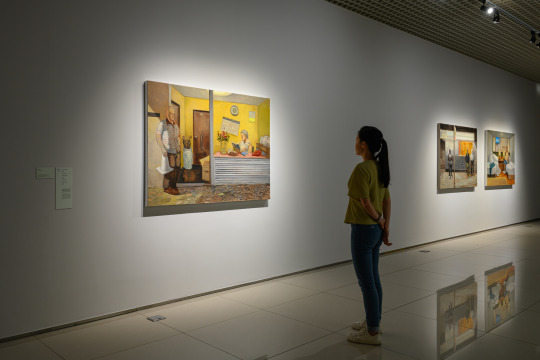
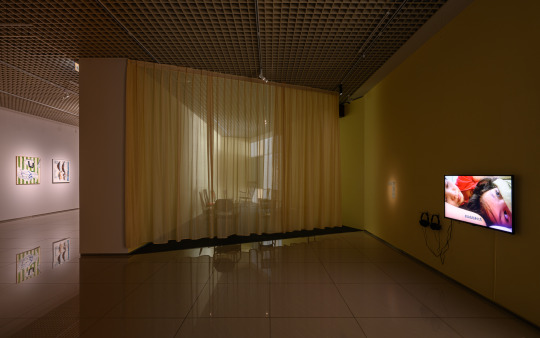




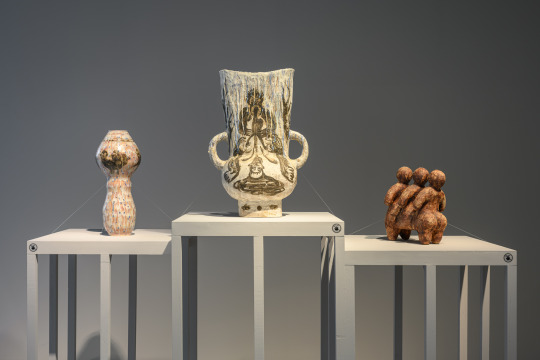



Here is where we meet
Here is where we meet
2023/06/29-10/15
Venue: Chiayi Art Museum 1F-3F
Supervisors:Ministry of Culture, Chiayi City Government
Organizers:Chiayi Art Museum, Tianmei Art Foundation
Collaborators:TKG+, Mind Set Art Center, Each Modern
Curator:Erica Yu-Wen Huang
Artists:Wang Po-Yen, Wu Chuan-Lun, Lin Yi-Hsuan, Lin Ying-Chieh, Chiu Chen-Hung, Chang Chih-Chung, Zhang Xu-Zhan, Chang Cheng-Chun, Chuang Ho, Kuo Yu-Ping, Chen I-Chun, Chen Sung-Chih, Chen Ching-Yuan, Chen Ching-Ming, Huang Chih-Cheng, Liao Chi-Yu, Liu Chih-Hung, Cheng Nung-Hsuan, Jian Yi-Hong, Lo Yi-Chun
Archive Room - Participating Artists:Ding Chien-Chung, Niu Jun-Qiang, Wang Po-Yen, Shih Meng-Hsin, Wu Chuan-Lun, Li Yi-Fan, Li Ting-Huan, Lin Hao-Bai, Lin Yi-Wei, Lin Ying-Chieh, Chiu Chen-Hung, Chiu Chien-Jen, Hung Sheng-Hsiung, Hsu Yin-Ling, Shiu Sheng-Hung, Chang Chih-Chung, Zhang Xu-Zhan, Chang Cheng-Chun, Chang San-Hsueh, Chuang Ho, Kuo I-Chen, Kuo Yu-Ping, Chen I-Chun, Chen Sung-Chih, Chen Kuan-Ying, Chen Fei-Hao, Chen Ching-Yuan, Chen Ching-Ming, Huang Chih-Cheng, Huang Xuan, Yang Han-Chiao, Liao Chi-Yu, Liao Zen-Ping, Liu Chih-Hung, Liu Feng-Ling, Cheng Nung-Hsuan, Ou Jing-Yun, Hsieh Jhou-Yu, Jhong Jiang-Ze, Lo Chan-Peng, Luo Jr-Shin, Lo Yi-Chun
1 note
·
View note
Text
2023 World Baseball Classic Taiwan Roster
Pitchers
#15 Yen-Ching Lu (C.T.B.C. Xiōngdì/Kaohsiung Chéngshì)
#16 Wei-Chung Wang (Wei Chuan Lóng/Taitung Xiàn)
#17 Kuan-Yu Chen (Rakuten Hóuzi/Xīn Běishì)
#21 Chen-Ch’ang Lee (C.T.B.C. Xiōngdì/Penghu)
#29 Kai-Wei Teng (Richmond Flying Squirrels/Taichung)
#32 Yu-Hsun Chen (Rakuten Hóuzi/Taipei)
#43 Chia-Hao Sung (Tohoku Rakuten Gōruden'īgurusu/Taitung Xiàn)
#58 Chih-Wei Hu (Tǒngyī Qǐyè 7-Eleven Shīzi Huì/Taichung)
#59 Kuan-Wei Chen (Wei Chuan Lóng/Taipei)
#60 Jyun-Yue Tseng (Fubon Jiānhùrén/Taipei)
#69 Tzu-Peng Huang (Rakuten Hóuzi/Kaohsiung Chéngshì)
#71 Shao-Ching Chiang (Fubon Jiānhùrén/Hualien Xiàn)
#81 Shih-Peng Chen (Fubon Jiānhùrén/Taichung Xiàn)
#93 Che-Yuan Wu (C.T.B.C. Xiōngdì/Taipei)
Catchers
#4 Kungkuan Giljegiljaw (Wei Chuan Lóng/Taichung)
#31 Dai-An Lin (Tǒngyī Qǐyè 7-ElevenShīzi Huì/Sanmin Xiāng)
#65 Yu-Chieh Kao (C.T.B.C. Xiōngdì/Taipei)
Infielders
#1 Tsung-Che Cheng (Bradenton Marauders/Pingtung Xiàn)
#5 Tzu-Wei Lin (Long Island Ducks/Kaohsiung Xiàn)
#6 Wei-Chen Wang (C.T.B.C. Xiōngdì/Taipei)
#18 Yu-Cheng Chang (Boston Red Sox/Taitung Xiàn)
#39 Nien-Ting Wu (Saitama Seibu Raionzu/Taipei)
#46 Kuo-Chen Fan (Fubon Jiānhùrén/Taichung)
#83 Li Lin (Rakuten Hóuzi/Shoufeng)
#90 Kun-Yu Chiang (C.T.B.C. Xiōngdì/Taipei)
Outfielders
#2 Tien-Hsin Kuo (Wei Chuan Lóng/Taipei)
#9 Po-Jung Wang (Hokkaido Nippon-Ham Faitāzu/Pingtung Xiàn)
#12 Chen-Wei Chen (Rakuten Hóuzi/Taipei)
#24 Chieh-Hsien Chen (Tǒngyī Qǐyè 7-Eleven Shīzi Huì/Kaohsiung Chéngshì)
#35 Chin Cheng (Rakuten Hóuzi/Taipei)
Coaches
Manager Yueh-Ping Lin (Tǒngyī Qǐyè 7-Eleven Shīzi Huì/Kaohsiung Chéngshì)
Bench/catching coach Chih-Kang Kao (Tǒngyī Qǐyè 7-Eleven Shīzi Huì/Taichung Xiàn)
Hitting coach Cheng-Min Peng (C.T.B.C. Xiōngdì/Kaohsiung Chéngshì)
Assistant hitting coach Hao-Jin Tseng (Táiwān Bàngqiú/Taipei)
Pitching coach Ming-Chieh Hsu (Rakuten Hóuzi/Kaohsiung Chéngshì)
Bullpen coach Chien-Ming Wang (C.T.B.C. Xiōngdì/Guanmiao)
1st base/outfield coach Chien-Ming Chang (Wei Chuan Lóng/Hualien Xiàn)
3rd base coach Chiang-Ho Chen (C.T.B.C. Xiōngdì/Taipei)
#Sports#Baseball#National Teams#Taiwan#Celebrities#MiLB#Richmond Flying Squirrels#Japan#Bradenton Marauders#New York#MLB#Boston Red Sox
0 notes
Photo


354) Tangwai movement, Ruch Tangwai lub po prostu Tangwai (chiński: 黨外; pinyin: Dǎngwài; Wade – Giles: Tang-wai) - luźno powiązanym ruchem politycznym na Tajwanie w połowie lat siedemdziesiątych i wczesnych osiemdziesiątych. Chociaż rządzący Kuomintang (KMT) zezwolił na kwestionowane wybory o niewielką liczbę miejsc w Legislative Yuan, partie opozycyjne były nadal zakazane. W rezultacie wielu przeciwników KMT, oficjalnie sklasyfikowanych jako niezależni, kandydowało i zostało wybranych na członków „spoza partii”. Ruch był czasami tolerowany, a innym razem tłumiony, co miało miejsce szczególnie po incydencie w Kaohsiung w 1979 r. Członkowie ruchu ostatecznie utworzyli Demokratyczną Partię Postępową, która po zalegalizowaniu opozycyjnych partii politycznych, zakwestionowała wybory i wygrała prezydenturę z kandydatem Chen Shui-bianem, kończący dziesięciolecia rządów jednej partii na Tajwanie. Wczesne postacie związane z ruchem to Kang Ning-hsiang i Huang Hsin-chieh. Profesorowie z college'u przeprowadzili serię demonstracji i otwartych żądań zmian politycznych na ulicach miast. W 1973 r. rząd zaczął aresztować przywódców tego nowego ruchu i zwalniać profesorów, którzy otwarcie krytykowali reżim. Kierując autorytarnym rządem, Chiang Ching-kuo wydawał się być otwarty na możliwość politycznego sprzeciwu. Ponieważ większość miejsc w Legislative Yuan zajmowali delegaci rzekomo reprezentujący okręgi wyborcze w Chinach kontynentalnych, którzy zostali wybrani w 1947 r., a następnie mianowani (ponieważ „elektorat” w Chinach kontynentalnych nie był w stanie oddać głosów w wyborach w obszarze Tajwanu), w oczekiwaniu na obiecane odzyskanie Chin kontynentalnych, ruch Tangwai nie miał możliwości zdobycia władzy. Byli jednak w stanie wykorzystać ustawodawcę jako forum do debaty nad rządzącym KMT. W odpowiedzi na objęcie urzędów publicznych przez bardziej rdzennych Tajwańczyków, Tangwai próbowali zakwestionować wybory w latach 1975-1976 i zażądać jeszcze większych zmian w systemie politycznym. Politycy Tangwai niechętnie związali się ze Zgromadzeniem Narodowym, ponieważ stanowiska te były rzekomo powiązane z okręgami wyborczymi w Chinach kontynentalnych. Byli w stanie odnieść zwycięstwa w konkursach Zgromadzenia Prowincji Tajwanu, gdzie kandydaci stowarzyszeni byli w stanie zdobyć 21 z 77 mandatów. Wygrali także w czterech z dwudziestu wyścigów sędziów i burmistrzów. Nieprawidłowości w procesie liczenia głosów w mieście Zhongli prowadzą do gwałtownych starć między protestującymi a policją w tak zwanym incydencie w Zhongli. Shih Ming-teh został zwolniony z więzienia wkrótce po Zhongli i próbował zaangażować się w wybory do Zgromadzenia Prowincji. W 1979 roku, w tym samym roku, w którym Stany Zjednoczone przestały uznawać Republikę Chińską, konflikt między władzami a Tangwai ponownie przybrał gwałtowny charakter w wyniku incydentu w Kaohsiung. Autorzy publikacji politycznej o nazwie Formosa Magazine lub Mei-li-tao zaplanowali serię marszów politycznych, najpierw w południowym mieście Kaohsiung, a później większy w Tajpej, chociaż wiec w Tajpej nie odbył się z powodu aresztowania liderzy magazynu. Policja podsłuchiwała telefony i obserwowała osoby powiązane z magazynem. W dniu demonstracji aktywiści wyszli na ulice w formacji paradnej w Kaohsiung, ale kilka razy zostali przekierowani z powodu blokowania przez policję planowanej trasy. Próbowali zreorganizować się w Tainan, ale wielu ich przywódców zostało aresztowanych w ciągu następnych kilku dni. Shih Ming-teh unikał aresztowania przez kilka miesięcy, będąc ukrywanym przez członków Presbyterian Church of Taiwan (Prezbiteriańskiego Kościoła Tajwanu, PCT). Shih został wysłany na niesławną Zieloną Wyspę, podobnie jak sekretarz generalny PCT, Kau Chih-min. Incydent w Kaohsiung oznaczał koniec otwartych demonstracji Tangwai. W obliczu walki o uznanie dyplomatyczne przez społeczność międzynarodową rząd Kuomintangu postanowił zakończyć sprzeciw polityczny, uznając, że działacze polityczni spoza partii stwarzają wrażenie niestabilności rządu. Przez całe lata 80. administracja Chiang nadal ograniczała wolność słowa. Z drugiej strony uczeni argumentują, że różne inne demonstracje zwykłych obywateli pomogły utrzymać ruch Tangwai przy życiu pomimo masowego uwięzienia jego przywódców. Przykłady innych ruchów społecznych zarówno z klasy średniej, jak i robotniczej, które organizowały publiczne demonstracje, obejmowały rolników protestujących przeciwko korporacyjnym farmom oraz ekologów sprzeciwiających się proponowanej budowie fabryki firmy DuPont w Lukang. Prezbiteriański Kościół Tajwanu był powiązany z wieloma członkami Tangwai, a sam Kościół był w centrum rządowej cenzury za publikowanie prac w zromanizowanym tajwańskim Hokkienie w latach 70. Rząd skonfiskował te dzieła, co skłoniło Kościół do zaapelowania do administracji Cartera w Stanach Zjednoczonych o podkreślenie tego, co uważa za naruszenie praw człowieka. Wysiłki mające na celu przeciwdziałanie Tangwai mogły obejmować otwarcie systemu politycznego na Tajwańczyków, którzy nie wyznawali radykalnych przekonań. Różne osoby pomagały rekrutować intelektualistów do pracy w Kuomintangu. Sung Shih-hsuan, ówczesny przewodniczący Prowincjonalnego Komitetu Partii, wprowadził orientację na służbę społeczną do pracy lokalnej partii, być może w celu przeciwdziałania społecznemu aktywizmowi Kościoła Prezbiteriańskiego i zakonu Maryknoll. Członkowie ruchu Tangwai utworzyli Demokratyczną Partię Postępu (DPP) w 1986 roku. Chociaż KMT uważa ją nadal za nielegalną, KMT nie podjął działań przeciwko DPP, a partia została zalegalizowana w 1991 roku. Wielu obecnych polityków na Tajwanie, w szczególności były prezydent Chen Shui-bian i wiceprezydent Annette Lu, było aktywnych w ruchu Tangwai. Członkowie Tangwai, w tym Shih Ming-teh i Lin Yi-hsiung, byli często nękani lub więzieni przez rząd KMT, zwłaszcza w następstwie incydentu w Kaohsiung.
0 notes
Conversation
Miyabi: Chiali, Cai-jie, you're sisters. You shouldn't be fighting. It should be you against the world; all you have is each other.
Koharu: Miyabi, your sister is on the phone.
Miyabi: Tell that bitch to go to hell!
#akb48 team tp#miyabi#chen shih ya#li chia li#li cai jie#koharu#lau hiu ching#chen shih yuan#source: it's always sunny in philadelphia
2 notes
·
View notes
Photo

Old news, but I'm still sad that one of the twins didn't stay for Team TP. It makes sense, she'd been left in limbo for ages but I was looking forward to seeing them debut together. Especially after how long they had been waiting for their debut.
13 notes
·
View notes
Photo

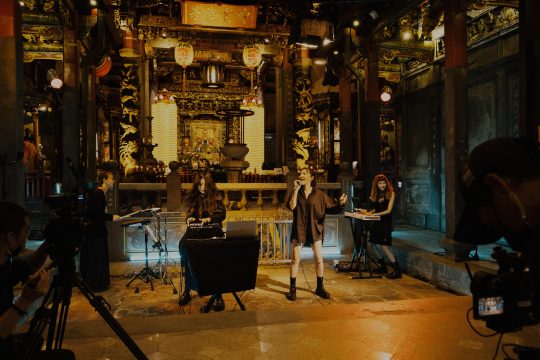








Taiwan Beats at SXSW Online 2021
⠀
-
演出名單 Lineup|鄭宜農 Enno Cheng、滅火器 Fire EX.、椅子樂團 The Chairs、妮可醬
主辦單位 Official Organizer|文化部影視及流行音樂產業局 Bureau Of Audiovisual And Music Industry Development,MOC.
承辦單位 Executive Organizer|Young Team Productions
協辦單位 Cooperation|火氣音樂 FIRE ON MUSIC⠀⠀
監製 Executive Producer|好秀有限公司 Good Show Lab
影像製作 Video Production|順天堂影像製作工作室 Soft Paradise Studio
導演 Director|順 Shaun Liu、陳容寬 Chen Jung Kuan、林悅恩 Wayne Lin
攝影師 Cameraman|郭彥澤 Kuo Yen Ze、陳貞文 Chen Chen Wen、高興萱 Kao Hsing Hsuan、順 Shaun Liu、莊竣瑋 Chun Wei Chuang
製片 Line Producer|古朝瀚 Harry Goo
燈光師 Gaffer|吳儼育 Yen Wu
燈光助理 Lighting Technician |陳龍達 Lung da Chen、沈源 Yuan Shen、楊鈺銘 Yu Ming Yang、田俊榮 Jun Rong Tian
剪接師 Editor|白欣田 Cordelia Pai、朱威 Wei Chu
調光師 Colorist|李子璇 Chih Xuan Lee、魚魚 Fish Fish
製片助理 Producer To Assistant|宋佾庭 Yi Ting Sung、賴俊亘 Jyun Lai
平面側拍 Still Photographer|陳奕筑 Bana Chen
妝髮 Make Up|顏維音 Echo Yen、湯淑琳 Wawa Tang、王禎旎 Aura Wang、丁詩穎 Ting Shih yin、鄭飛鴻 Cheng Fei-Hung、吳岱蓉 Wu Tai-Jung
音樂總監 Music Director|盧律銘 Lu Luming
音響工程 Audio Engineer|角局音響 TCM Sound
現場錄音師 Recording Engineer|黃勝偉 Kane Huang
混音工作室 Mixing Studio|112F Recording Studio
混音師 Mixing Engineer|錢煒安 Zen Chien
媒體企劃 Media Organizer|子 皿 In Utero
國際策略顧問 International Strategy Consultant|嚴敏 Mia Min Yen
主視覺設計 Key Visual Design|宋政傑 Cheng Chieh Sung⠀
特別感謝 Special Thanks|露境東岳 Camping East Site、艋舺青山宮 Bangka Qingshan Temple、至善釣蝦場 Zhishan Shrimp Fishing
7 notes
·
View notes
Video
vimeo
2019 Golden Pin Design Award Open from Bito on Vimeo.
2019 金點獎頒獎典禮開場影片|23:59的饗宴
以17SDGs聯合國永續發展目標為題,結合金點獎LOGO和多元風格,創作出17幅與人類景況息息相關的海報圖像。
開場影片即是運用這17幅圖像為材開展出的故事。
輕盈的青鳥就像人類,承受地球環境日漸嚴峻的反撲壓迫,23:59 已然逼近。設計師是否還有創造改變的機會?
The concept of Golden Pin Design Award this year is “Gala @ 23:59,”which raises awareness about the UN’s 17 Sustainable Development Goals.
Bito wants to inspire the design community to take urgent action for sustainability by following #SDGs. We believe that positivity is essential to overcoming this apocalyptic challenge we all face together, and therefore he calls it a “Gala”, linking it together with the time “23:59” to signify the last moment before a new dawn.
The blue bird is like human, undertaking the pressure by severe changes on earth. “23:59” is ticking, do designers really have a chance to change this?
Opening Film
Directed by Bito
Client:台灣創意設計中心 Taiwan Design Center
Creative Director:劉耕名 Keng-Ming Liu
Copy Director:黃心怡 Vicki Huang
Design Director:莊宜蓁 Jen Chuang
Art Director:蘇暉凱 Hui-Kai Su
Producer : 劉妤暄 Tammy Liu
Assistant Producer : 林妍欣 Freda Lin
Ideation:劉耕名 Keng-Ming Liu/ 黃心怡 Vicki Huang / 蘇暉凱 Hui-Kai Su / 王璿甯 Hsuan-Nin Wang /呂秉真 Binbin Lu / 謝鎮璘 Chen-Lin Hsieh /邵偉豪 Wei-Hao Shao / 蔡易廷 Eating Tsai
Design:蘇暉凱 Hui-Kai Su/ 王璿甯 Hsuan-Nin Wang/ 呂秉真 Binbin Lu/ 謝鎮璘 Chen-Lin Hsieh/ 邵偉豪 Wei-Hao Shao/ 蔡易廷 Eating Tsai/ 郭怡辰 Yi-Chen Kuo/ 賴又綺 Lai-Yu Chi
Storyboard:蘇暉凱 Hui-Kai Su/ 呂秉真 Binbin Lu/ 邵偉豪 Wei-Hao Shao
Cel Animation: 呂秉真 Binbin Lu/ 林晉葦 Allen Lin/ 黃耀邦 Huang Yao Pang/ 蔡易廷 Eating Tsai / 盧丁衣 Ding-Yi Lu
Painting Artist:王璿甯 Hsuan-Nin Wang/ 蕭惠心 Huei-Sin Xiao/ 蔡香蘭 Hsiang-Lan Tsai/ 周依汝 Yi-Ju Chou
Animation: 蘇暉凱 Hui-Kai Su/ 黃省元 Olaola Yuan/ 黃鈺凱 Steve Huang/ 邵偉豪 Wei-Hao Shao/ 王璿甯 Hsuan-Nin Wang/ 謝鎮璘 Chen-Lin Hsieh
3D animation: 蘇暉凱 Hui-Kai Su/ 邵偉豪 Wei-Hao Shao/ 黃鈺凱 Steve Huang/ 高慶和 Chin Ho Kao/ 游家廳 Chia-Ting yu/ 張雅惠 Ya-Hui Chang/ 詹游丞 Yo-Cheng Chan/ 賴姮鳴 Henmi Lai
Editing:蘇暉凱 Hui-Kai Su
CG Character Animation
CG Supervisor: 黃思豪 Triston Huang
Pipeline TD: 賴大維 David Lai
Rigging: 許博翔 Skywalker Xu
Animation: 石均宇 Stone Shih
Modeling & Texturing: 林哲孝 Tommy Lin
Music & Sound Design: 韓承燁 Cheng-Yeh Han
Special thanks: 陳世霖 Shih-Lin Chen (Cellist)
0 notes
Text
DAILY SELECTIONS FROM LAO-TZU’S TAO TE CHING — JULY 28, 2022
“Instead of pouring in more
better stop while you can
making it sharper
won’t help it last longer
rooms full of treasure
can never be safe
the vanity of success
invites its own failure
when your work is done retire
this is the Way of Heaven”
-Lao-tzu-
(Taoteching, verse 9, translation by Red Pine)
THE HOUHANSHU says, “What Lao-tzu warns against is ‘pouring in more’” (see the Houhanshu’s Lao-tzu biography).
HSUN-TZU says, “In the ancestral hall of Duke Huan, Confucius reports watching an attendant pour water into a container that hung at an angle. As the water level approached the midpoint, the container became upright. But when the attendant went beyond the midpoint, it tipped over, the water poured out, and only after it was empty did it resume its former position. Seeing this, Confucius sighed, ‘Alas! Whatever becomes full becomes empty’” (Hsuntzu: 28).
LU TUNG-PIN says, “This verse is about the basics of cultivation. These are the obstacles when you first enter the gate.”
LIU SHIH-LI says, “Since fullness always leads to emptiness, avoid satisfaction. Since sharpness always leads to dullness, avoid zeal. Since gold and jade always lead to worry, avoid greed. Since wealth and honor encourage excess, avoid pride. Since success and fame bring danger, know when to stop and where lies the mean. You don’t have to live in the mountains and forests or cut yourself off from human affairs to enter the Way. Success and fame, wealth and honor are all encouragements to practice.”
YEN TSUN says, “To succeed without being vain is easy to say but hard to practice. When success is combined with pride, it’s like lighting a torch. The brighter it burns, the quicker it burns out.”
WANG CHEN says, “To retire doesn’t mean to abdicate your position. Rather, when your task is done, treat it as though it were nothing.”
SSU-MA CH’IEN says, “When Confucius asked about the ceremonies of the ancients, Lao-tzu said, ‘I have heard that the clever merchant hides his wealth so his store looks empty and that the superior man acts dumb to avoid calling attention to himself. I advise you to get rid of your excessive pride and ambition. They won’t do you any good. This is all I have to say to you’” (Shihchi: 63).
HO-SHANG KUNG says, “Excessive wealth and desire wearies and harms the spirit. The rich should help the poor, and the powerful should aid the oppressed. If, instead, they flaunt their riches and power, they are sure to suffer disaster. Once the sun reaches the zenith, it descends. Once the moon becomes full, it wanes. Creatures flourish then wither. Joy turns to sorrow. When your work is done, if you do not step down, you will meet with harm. This is the way of Heaven.”
HUANG YUAN-CHI says, “You need a raft to cross a river. But once across, you can forget the raft. You need to study rules to learn how to do something. But once you know how, you can forget the rules.”
And RED PINE adds, “This recipe for long life has been repeated in every civilized culture, and yet it has forever fallen on deaf ears.”
6 notes
·
View notes
Photo

Voices of Photography 攝影之聲
Issue 26 : 末日棲居
Dwelling in the Apocalypse
面對不可預期的來日,我們是否與德國詩人腓特烈.賀德林(Friedrich Hölderlin)曾言的「詩意地棲居」更加疏遠?災害與戰禍、虛假與算計,人類世界無限擴張的野心和欲望未曾降低,人的存在也愈來愈難以賦添詩意。而衝突升高的國際政治情勢,使此刻相隔末日只剩兩分鐘的「末日時鐘」竟回到與1953年冷戰時期的同一等級,成為二戰結束以來與末日距離最近的年代。我們如何可能地棲居——在末日到來的大地?
志賀理江子迷離如夢般的影像書寫,是她在2011年親歷東日本大地震之後對於存在與死亡的感知路徑。在新作《Human Spring》中,志賀試圖打開如今已逐漸被封閉但仍存於人類內在的自然性與身體感,透過繪織意識流般的圖景,呈現著對於人性與生存本身的冥思啟示。林諭志的《Asongcalledformosa》是他在漫長的家園行旅中刻錄的私房曲盤—故鄉與里人、工業區和荒涼的海岸、父親在二戰時遭日本軍徵召至南洋服役的往事記憶⋯⋯,跨越數十年的影像在此首次發表,島嶼的戀曲與哀歌幽幽鳴奏,旅人一路踽踽低吟。1980年代起投入錄像裝置創作的袁廣鳴,作品反映著對於日常生活的不安覺察,自上世紀末的《關於米勒的晚禱》、《離位》到本世紀的《城市失格》、《能量的風景》、《棲居如詩》、《日常演習》等系列作品,發散著前末日感氣息的寓言,這些寓言緩慢漂移在去人化的現代社會空間,直至世界轟然炸裂。
在本期中,謝佩君深度描寫美國藝術家克利斯迪安.馬克雷(Christian Marclay)與亞瑟.賈法(Arthur Jafa)各自運用現成影像蒙太奇的創作,傳遞著影像生產中戰爭、暴力的末世預警,這兩件於今年威尼斯雙年展中受到矚目的錄像作品,同時反映著本屆「願你生活在有趣的時代」這個對現今世界充滿各種不確定性的喻義主題。陳儒修則從影史開展的歷史性一幕—「火車進站」—指出電影發展的開端與災難的關聯、災難電影與現實經驗的糾葛,以及電影本身所造成的歷史性災難。
日本在今年告別「平成」年代並開啟「令和」年號,對日本的政治與文化進入新的階段有著重要的象徵意義,張世倫從昭和天皇裕仁於1946年發表的「人間宣言」開始,針對天皇形象在戰後的轉變與影像包裝歷程,進行了細緻地視覺解析,檢視天皇制度綿延而生的歷史記憶與文化政治。「攝影書製作現場」單元則近訪日本藝術書籍出版社赤赤舍創辦人姬野希美,記錄了外界少見的編印工作實況。
今年三月起,《攝影之聲》與空總台灣當代文化實驗場合作舉辦了一系列由藝術家和影像研究者帶領的「歷史後像:攝影史敘事工作坊」,嘗試推進攝影史的當代意義與創造性思索。本期我們特別摘錄其中由高重黎主持的「影像機器工作坊」談話,在這份講稿中,他以視覺原理出發,揭示藝術與文學創作如何回應攝影與視覺,並創造出強調手眼協作感知的「觸/視頭部造相術」,為思考攝影/視覺史帶來新的啟發。關於工作坊系列的更多內容,我們將在後續製作的專題中呈現。同時,我們近期也將舉辦攝影史論壇與相關活動,等待你一起來參與。
購書 Order
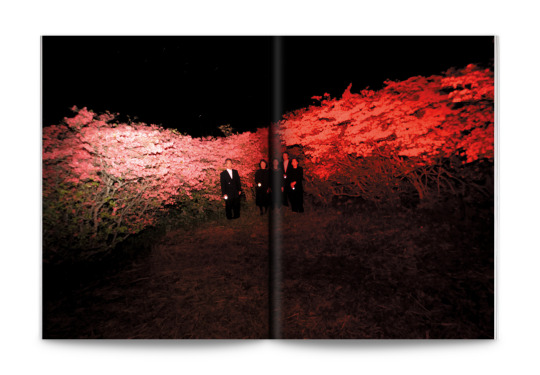

In the face of unpredictable days ahead, have we drifted even further away from the “poetic dwelling” the German poet Friedrich Hölderlin so poignantly described? Disasters and wars, lies and scheming - the ambitions and desires that plague the human world never cease to expand, making it harder to imbue the presence of humans with a sense of poetry. As the threat of conflict in global politics rises to its highest level since the Cold War in 1953, where the “doomsday clock” stays at two minutes to midnight, we are closer than ever to the end since World War II. How do we possibly survive on this land as the apocalypse closes in?
Shiga Lieko’s dream-like imagery creations reflect her perception of life and death after living through the Great East Japan Earthquake in 2011. In her latest work, Human Spring, Shiga attempts to recover the sense of nature and self that lies within all humans but has since been forgotten and buried. She does so through the use of imagery that flows like a stream of consciousness, presenting a picture of meditation on human nature and survival itself. Lin Yu-Chih’s Asongcalledformosa is a private songbook he created on a long travel home, filled with songs like that of his hometown and its people, the industrial area and the desolate coast, and memories of his father being recruited by the Japanese army to serve in Southeast Asia. These images taken over the course of decades are published for the first time, singing the love and sorrowful songs of this island that the traveler hums along to as he set out on his journey. Yuan Goang-Ming has been working with video installation since the 1980s, and his work illustrates a sense of uneasiness towards daily life. From About Millet’s The Angelus and Out of Position created at the end of last century, to more recent works such as City Disqualified, Landscape of Energy, Dwelling and Everyday Maneuver, a sense of our past and last days permeates his creations, the message of which is drifting afloat in the modern social space that has been dehumanized, until the world can finally take no more.
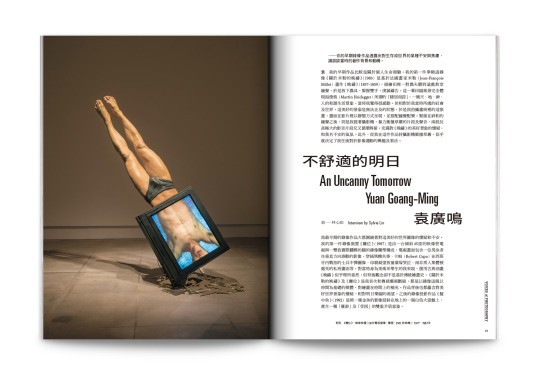


In this issue, Hsieh Pei-Chun describes in great detail American artists Christian Marclay and Arthur Jafa’s works that consist of found footage, and are warning of war and violence. Their works received much attention in this year’s edition of the Venice Biennale as they reflected the metaphorical theme of the Biennale that hints at uncertainties in today’s world, “May You Live in Interesting Times”. On the other hand, Chen Ru-Shou draws a connection between movies and disasters, the entanglement of disaster films and real-life experience and finally the disasters brought about by filmmaking itself.
Japan’s era name change from Heisei to Reiwa this year is symbolically significant both for her politics as well as her culture which have also entered a new era. Chang Shih-Lun takes a look at the post-war transformation in the external images of Emperor Hirohito since his “Declaration of Humanity” in 1946, analyzing in detail the memories of history and cultural politics that followed Japan’s imperial system. Furthermore, the Photobook Making Case Study segment features a rare behind-the-scenes look at printing work with Himeno Kimi, founder of AKAAKA, a Japanese art book publisher.
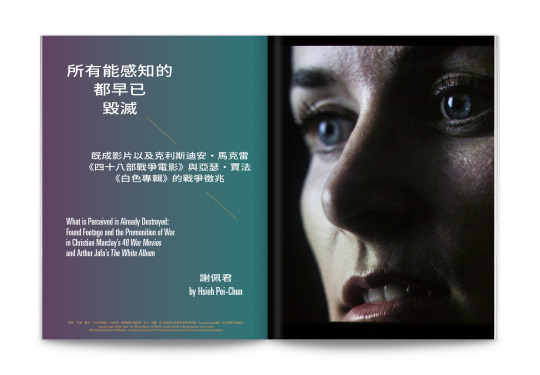
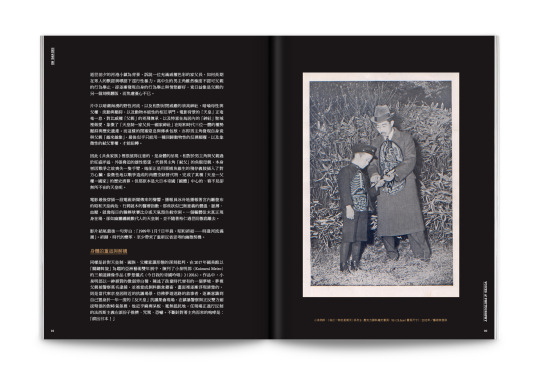
Since March this year, we have been co-organizing with C-LAB the Afterimage of History: Photography History Narrative Workshops, a series of workshops led by artists and imagery researchers, promoting the critical thinking of contemporary meaning and creativity in the history of photography. In this issue, we are featuring an excerpt from artist Kao Chung-Li’s lecture in his Imagery Machine workshop, in which he spoke about the principles of visual imagery, and revealed the ways art and literary creations responded to photography and visual perception. (Kao also created a concept called “chù/shìh tóu bù jhào siàng shù” (tangibility of touch/sight head phase-image making method), a method to illustrate the perception of touch and sight in image creation, inspiring new ways to approach photography and visual history.) We will be featuring more content from the workshops in future issues. At the same time, we will also be organizing a forum on photography history, and we look forward to your participation.



購書 Order
#Voices of Photography#攝影之聲#志賀理江子#Shiga Lieko#林諭志#Lin Yu-Chih#袁廣鳴#Yuan Goang-Ming#高重黎#Kao Chung-Li#AKAAKA#赤赤舍#姬野希美#Himeno Kimi#攝影#photography#VOP#Arthur Jafa#Christian Marclay
9 notes
·
View notes
Photo

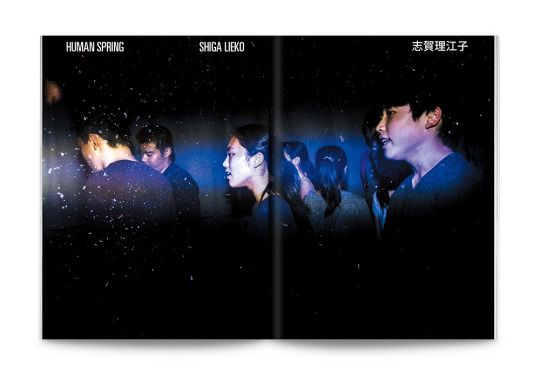

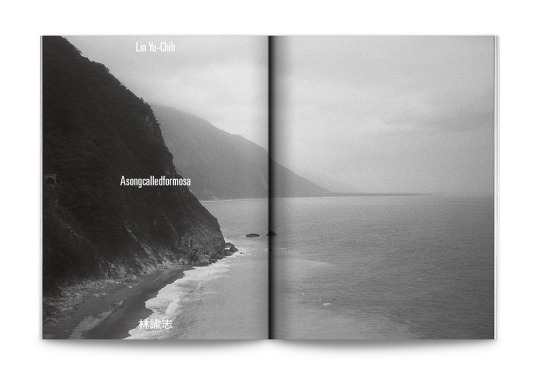
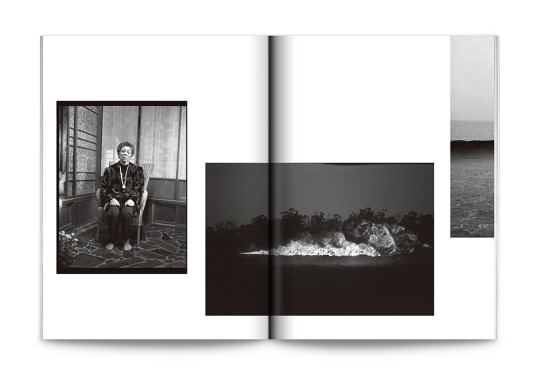

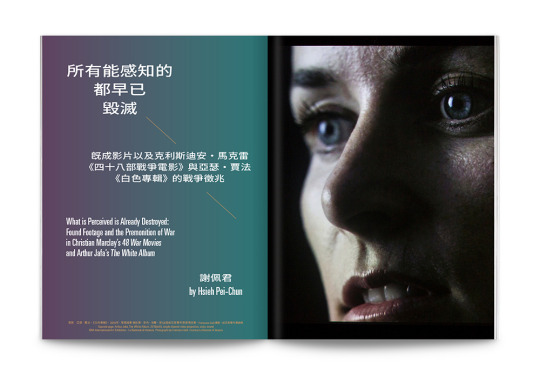
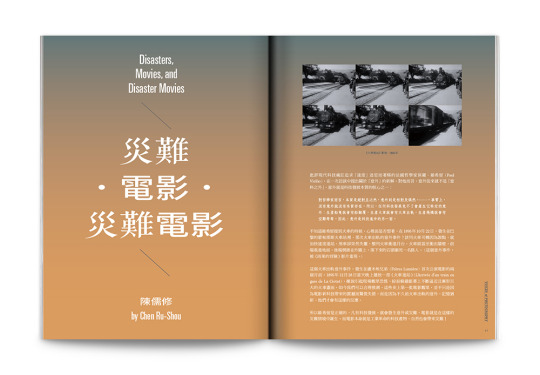

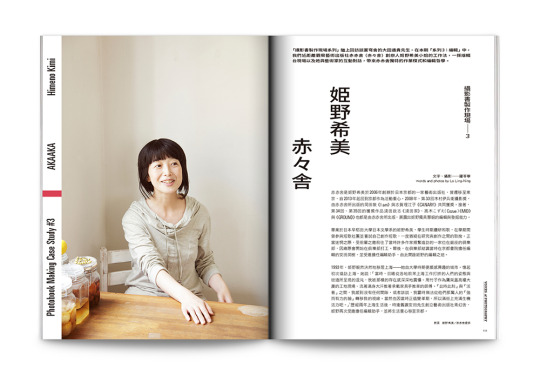
2020年1月6日
【新入荷・新本】
『Voices of Photography 攝影之聲 Issue 26: 末日棲居 DWELLING IN THE APOCALYPSE』(影言社、2019年)
価格:2,273円(+税)
/
台湾の写真雑誌「Voices of Photography 攝影之聲」最新号は、ヘルダーリン=ハイデッガー「詩人のように人間は住まう」を糸口として、志賀理江子「ヒューマン・スプリング」展を大々的に特集。
/
面對不可預期的來日,我們是否與德國詩人腓特烈.賀德林(Friedrich Hölderlin)曾言的「詩意地棲居」更加疏遠?災害與戰禍、虛假與算計,人類世界無限擴張的野心和欲望未曾降低,人的存在也愈來愈難以賦添詩意。而衝突升高的國際政治情勢,使此刻相隔末日只剩兩分鐘的「末日時鐘」竟回到與1953年���戰時期的同一等級,成為二戰結束以來與末日距離最近的年代。我們如何可能地棲居——在末日到來的大地?
志賀理江子迷離如夢般的影像書寫,是她在2011年親歷東日本大地震之後對於存在與死亡的感知路徑。在新作《Human Spring》中,志賀試圖打開如今已逐漸被封閉但仍存於人類內在的自然性與身體感,透過繪織意識流般的圖景,呈現著對於人性與生存本身的冥思啟示。林諭志的《Asongcalledformosa》是他在漫長的家園行旅中刻錄的私房曲盤—故鄉與里人、工業區和荒涼的海岸、父親在二戰時遭日本軍徵召至南洋服役的往事記憶⋯⋯,跨越數十年的影像在此首次發表,島嶼的戀曲與哀歌幽幽鳴奏,旅人一路踽踽低吟。1980年代起投入錄像裝置創作的袁廣鳴,作品反映著對於日常生活的不安覺察,自上世紀末的《關於米勒的晚禱》、《離位》到本世紀的《城市失格》、《能量的風景》、《棲居如詩》、《日常演習》等系列作品,發散著前末日感氣息的寓言,這些寓言緩慢漂移在去人化的現代社會空間,直至世界轟然炸裂。
在本期中,謝佩君深度描寫美國藝術家克利斯迪安.馬克雷(Christian Marclay)與亞瑟.賈法(Arthur Jafa)各自運用現成影像蒙太奇的創作,傳遞著影像生產中戰爭、暴力的末世預警,這兩件於今年威尼斯雙年展中受到矚目的錄像作品,同時反映著本屆「願你生活在有趣的時代」這個對現今世界充滿各種不確定性的喻義主題。陳儒修則從影史開展的歷史性一幕—「火車進站」—指出電影發展的開端與災難的關聯、災難電影與現實經驗的糾葛,以及電影本身所造成的歷史性災難。
日本在今年告別「平成」年代並開啟「令和」年號,對日本的政治與文化進入新的階段有著重要的象徵意義,張世倫從昭和天皇裕仁於1946年發表的「人間宣言」開始,針對天皇形象在戰後的轉變與影像包裝歷程,進行了細緻地視覺解析,檢視天皇制度綿延而生的歷史記憶與文化政治。「攝影書製作現場」單元則近訪日本藝術書籍出版社赤赤舍創辦人姬野希美,記錄了外界少見的編印工作實況。
今年三月起,《攝影之聲》與空總台灣當代文化實驗場合作舉辦了一系列由藝術家和影像研究者帶領的「歷史後像:攝影史敘事工作坊」,嘗試推進攝影史的當代意義與創造性思索。本期我們特別摘錄其中由高重黎主持的「影像機器工作坊」談話,在這份講稿中,他以視覺原理出發,揭示藝術與文學創作如何回應攝影與視覺,並創造出強調手眼協作感知的「觸/視頭部造相術」,為思考攝影/視覺史帶來新的啟發。關於工作坊系列的更多內容,我們將在後續製作的專題中呈現。同時,我們近期也將舉辦攝影史論壇與相關活動,等待你一起來參與。
In the face of unpredictable days ahead, have we drifted even further away from the “poetic dwelling” the German poet Friedrich Hölderlin so poignantly described? Disasters and wars, lies and scheming - the ambitions and desires that plague the human world never cease to expand, making it harder to imbue the presence of humans with a sense of poetry. As the threat of conflict in global politics rises to its highest level since the Cold War in 1953, where the “doomsday clock” stays at two minutes to midnight, we are closer than ever to the end since World War II. How do we possibly survive on this land as the apocalypse closes in?
Shiga Lieko’s dream-like imagery creations reflect her perception of life and death after living through the Great East Japan Earthquake in 2011. In her latest work, Human Spring, Shiga attempts to recover the sense of nature and self that lies within all humans but has since been forgotten and buried. She does so through the use of imagery that flows like a stream of consciousness, presenting a picture of meditation on human nature and survival itself. Lin Yu-Chih’s Asongcalledformosa is a private songbook he created on a long travel home, filled with songs like that of his hometown and its people, the industrial area and the desolate coast, and memories of his father being recruited by the Japanese army to serve in Southeast Asia. These images taken over the course of decades are published for the first time, singing the love and sorrowful songs of this island that the traveler hums along to as he set out on his journey. Yuan Goang-Ming has been working with video installation since the 1980s, and his work illustrates a sense of uneasiness towards daily life. From About Millet’s The Angelus and Out of Position created at the end of last century, to more recent works such as City Disqualified, Landscape of Energy, Dwelling and Everyday Maneuver, a sense of our past and last days permeates his creations, the message of which is drifting afloat in the modern social space that has been dehumanized, until the world can finally take no more.
In this issue, Hsieh Pei-Chun describes in great detail American artists Christian Marclay and Arthur Jafa’s works that consist of found footage, and are warning of war and violence. Their works received much attention in this year’s edition of the Venice Biennale as they reflected the metaphorical theme of the Biennale that hints at uncertainties in today’s world, “May You Live in Interesting Times”. On the other hand, Chen Ru-Shou draws a connection between movies and disasters, the entanglement of disaster films and real-life experience and finally the disasters brought about by filmmaking itself.
Japan’s era name change from Heisei to Reiwa this year is symbolically significant both for her politics as well as her culture which have also entered a new era. Chang Shih-Lun takes a look at the post-war transformation in the external images of Emperor Hirohito since his “Declaration of Humanity” in 1946, analyzing in detail the memories of history and cultural politics that followed Japan’s imperial system. Furthermore, the Photobook Making Case Study segment features a rare behind-the-scenes look at printing work with Himeno Kimi, founder of AKAAKA, a Japanese art book publisher.
Since March this year, we have been co-organizing with C-LAB the Afterimage of History: Photography History Narrative Workshops, a series of workshops led by artists and imagery researchers, promoting the critical thinking of contemporary meaning and creativity in the history of photography. In this issue, we are featuring an excerpt from artist Kao Chung-Li’s lecture in his Imagery Machine workshop, in which he spoke about the principles of visual imagery, and revealed the ways art and literary creations responded to photography and visual perception. (Kao also created a concept called “chù/shìh tóu bù jhào siàng shù” (tangibility of touch/sight head phase-image making method), a method to illustrate the perception of touch and sight in image creation, inspiring new ways to approach photography and visual history.) We will be featuring more content from the workshops in future issues. At the same time, we will also be organizing a forum on photography history, and we look forward to your participation.
https://www.vopmagazine.com/
1 note
·
View note
Text
2020 Olympics Taiwan Roster
Archery
Chih-Chun Tang (Taipei)
Jūnháng Wèi (Taipei)
Yu-Cheng Deng (Taipei)
Jiā Lín (Hsinchu)
Yǎtíng Tán (Hsinchu)
Qiangying Lei (Taipei)
Athletics
Chun-Han Yang (Taoyuan Chéngshì)
Kuei-Ru Chen (Sihu)
Chieh Chen (Taichung Chéngshì)
Chao-Tsun Cheng (Xīn De Taipei Chéngshì)
Shih-Feng Huang (Taipei)
Hsi-En Hsieh (Yuli Xiāng)
Badminton
Tien-Chen Chou (Taipei)
Tzu-Wei Wang (Taipei)
Yáng Lǐ (Kaohsiung Chéngshì)
Chi-Lin Wang (Taipei)
Tzu-Ying Tai (Kaohsiung Chéngshì)
Boxing
Hsiao-Wen Huang (Taipei)
Yu-Ting Lin (Xīn De Taipei Chéngshì)
Shih-Yi Wu (Taipei)
Nien-Chin Chen (Hualien Xiàn)
Canoeing
Chu-Han Chang (Taichung Chéngshì)
Cycling
Jùnjiā Féng (Miaoli Xiàn)
Equestrian
Jasmine Chen (New York, New York)
Golf
Cheng-Tsung Pan (Miaoli Chéngshì)
Lee Min (Taipei)
Wei-Ling Hsu (Taipei)
Gymnastics
Chih Li (Yilan Chéngshì)
Jiāhóng Táng (Taipei)
Yòurán Xiāo (Taipei)
Yuan-Hsi Hung (Taipei)
Hua-Tien Ting (Taipei)
Judo
Yung-Wei Yang (Shizi Xiāng)
Chen-Hao Lin (Taipei)
Chen-Ling Lien (Taipei)
Karate
Yìdá Wáng (Taipei)
Tzu-Yun Wen (Taipei)
Rowing
Yi-Ting Huang (Xīn De Taipei Chéngshì)
Shooting
Shàoquán Lǚ (Taipei)
Kun-Pi Yang (Taichung Chéngshì)
Yǐngxīn Lín (Taipei)
Chia-Chen Tien (Hsinchu)
Chia-Ying Wu (Taipei)
Swimming
Hsing-Hao Wang (Taichung Chéngshì)
Kuan-Hung Wang (Taipei)
Mei-Chien Huang (Taipei)
Table Tennis
Yun-Ju Lin (Yuanshu Xiāng)
Zhìyuān Zhuāng (Kaohsiung Chéngshì)
Chien-An Chen (Hsinchu Xiàn)
Yíjìng Zhèng (Tainan Chéngshì)
Sīyǔ Chén (Taipei)
Hsien-Tzu Cheng (Xīn De Taipei Chéngshì)
Taekwondo
Yu-Jen Huang (Taipei)
Wēitíng Liú (Changhua Xiàn)
Po-Ya Su (Taoyuan)
Chia-Ling Lo (Taipei)
Tennis
Yen-Hsun Lu (Taipei)
Hao-Ching Chan (Taipei)
Latisha Chan (Taipei)
Yu-Chieh Hsieh (Kaohsiung Chéngshì)
Jié-Yú Xǔ (Taipei)
Weightlifting
Yun-Ting Hsieh (Taipei)
Chan-Hung Kao (Kaohsiung Chéngshì)
Po-Jen Chen (Taipei)
Wen-Huei Chen (Taipei)
Wan-Ling Fang (Taipei)
Nien-Hsin Chiang (Kaohsiung Chéngshì)
Xìngchún Guō (Yilan Chéngshì)
1 note
·
View note
Text
CC Clique
339) CC Clique (chiński: CC派) lub Central Club Clique, Klika Klubu Centralnego (chiński: 中央俱樂部組織) - jedna z frakcji politycznych w Kuomintangu (Chińska Partia Nacjonalistyczna) w Chińskiej Republice Ludowej (1912–49). Kierowali nią bracia Chen Guofu i Chen Lifu, przyjaciele Czang Kaj-szeka. Chen Lifu i jego starszy brat Chen Guofu byli siostrzeńcami Chen Qimei, który aż do zabójstwa dokonanego przez chińskiego wodza Yuan Shih-kai w 1916 roku był mentorem przyszłego przywódcy nacjonalistów Czang Kaj-szeka. Z powodu tych osobistych powiązań bracia Chen przybyli, aby kierować operacjami organizacyjnymi zdominowanej przez Chiang KMT, zakładając własną organizację polityczną znaną jako CC Clique. Uważana za skrajną prawicę Kuomintangu obok Towarzystwa Niebieskich Koszul, CC Clique reprezentowała tradycjonalistów, antykomunistów, antyjapończyków i interesy ziemskie. Byli najbliżej generalissimusa Czang Kaj-szeka, wpływając na nominacje i awanse oraz posiadali największy pakiet głosów w Centralnym Komitecie Wykonawczym. Szefem partii był Chen Li-fu. Wśród jej członków było wielu członków elity partii, w tym takie osoby, jak żona Czang Kaj-szeka Soong Mei-ling i H. H. Kung. Wpłynęli na wywiad, handel, bankowość, wojsko, edukację i propagandę. Klika CC umieściła lojalnych zwolenników w całej partii i maszynerii rządowej, zapewniając wpływy w biurokracji, agencjach edukacyjnych, organizacjach młodzieżowych i związkach zawodowych. Bracia wywarli również wpływ na Centralne Biuro Śledcze i Statystyczne KMT, jedno z dwóch głównych organów policyjnych i wywiadowczych w Chiang. Chen Lifu swobodnie przyznał, że jednostki te wywołały znaczną krytykę (The Storm Clouds, s. 68). Wang Tseng-shan, chiński muzułmanin, był komisarzem KMT do spraw obywatelskich w koalicyjnym rządzie Xinjiangu w latach 1946–47 i był związany z kliką CC. Ujgur Masud Sabri był także członkiem kliki CC, podobnie jak Tatar Burhan Shahidi i generał KMT oraz Chińczyk-Han Wu Zhongxin.
0 notes